Por tico
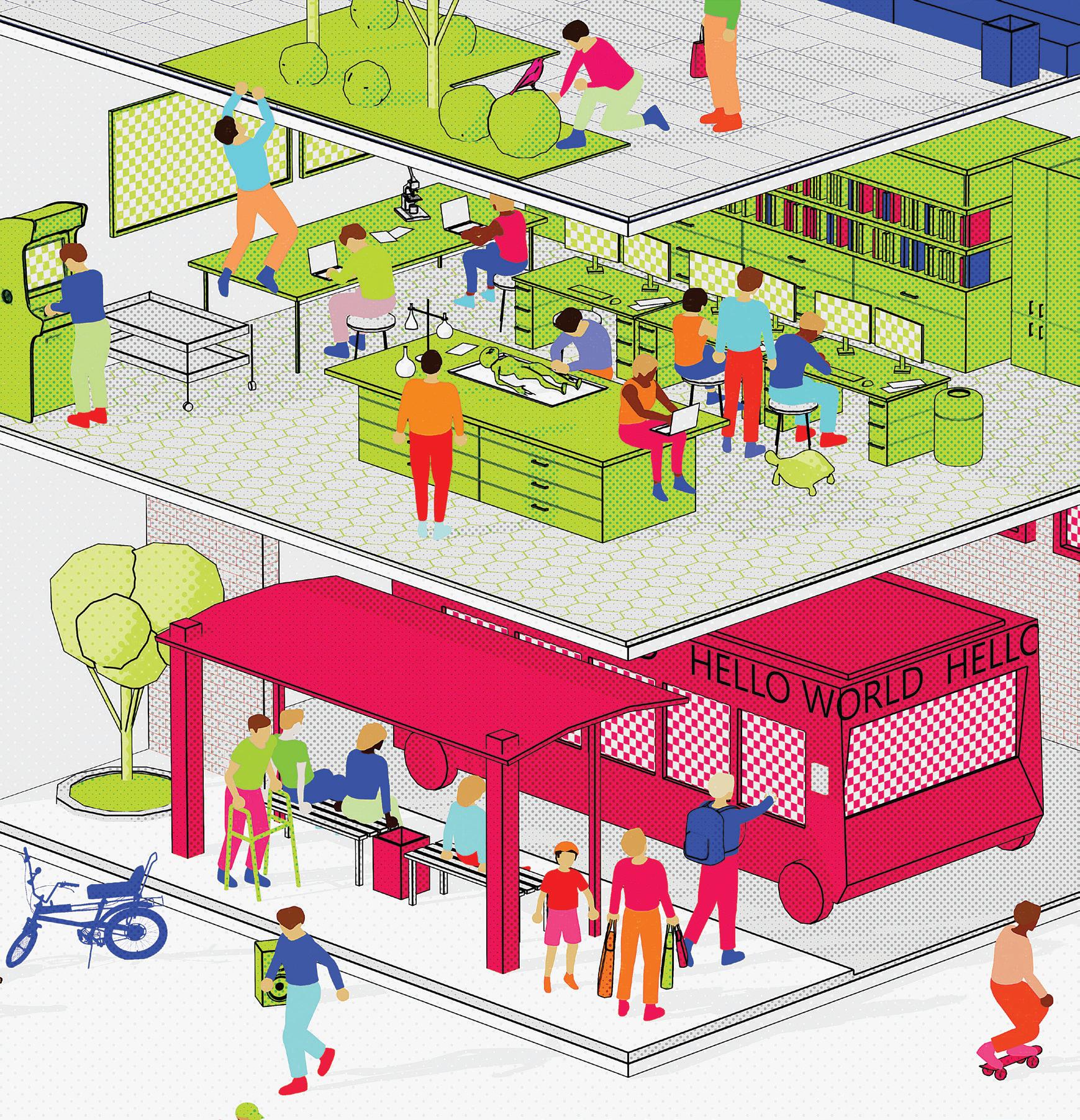
Taubman College of Architecture and Urban Planning at the University of Michigan

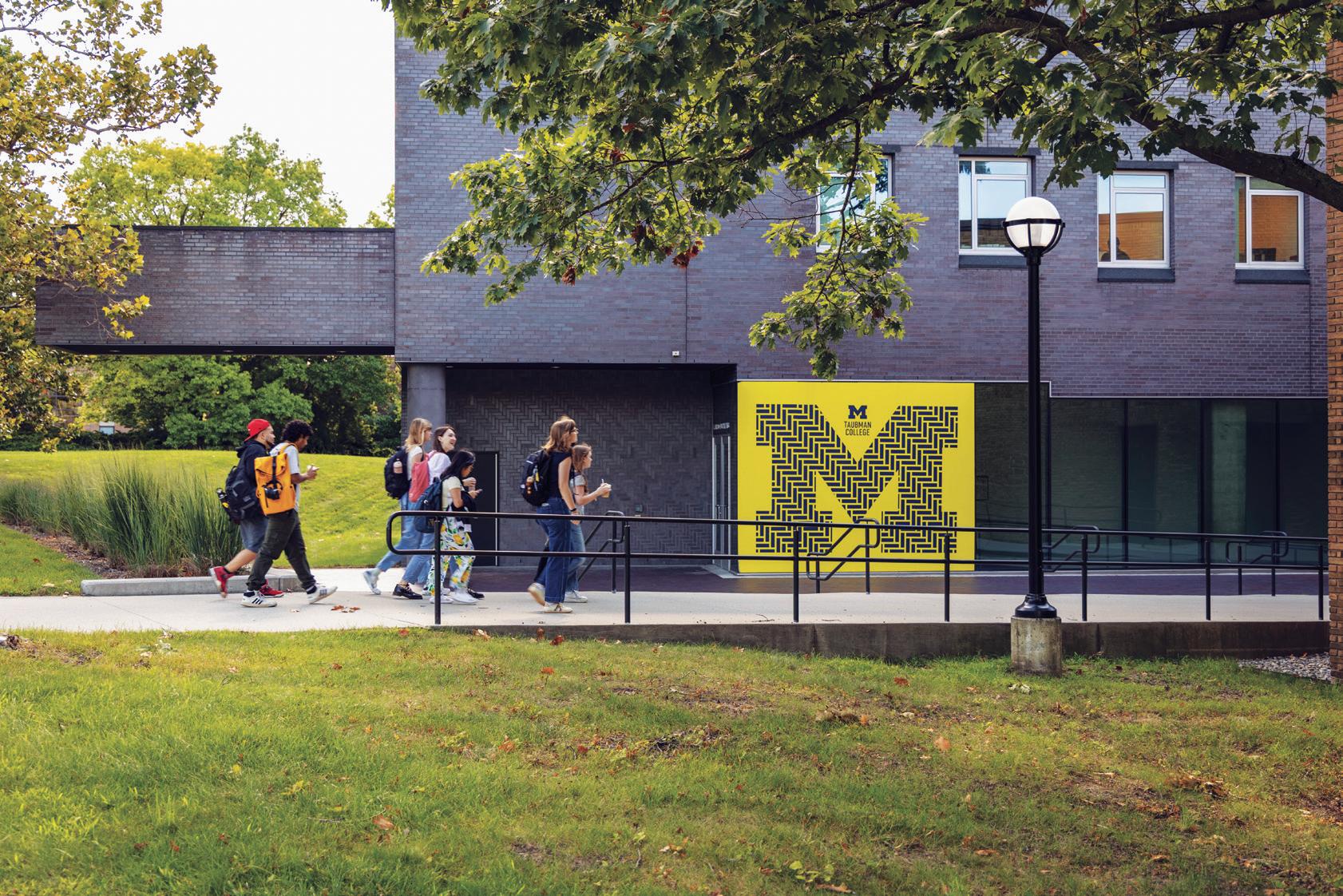


Taubman College of Architecture and Urban Planning at the University of Michigan


The mission of our university is “to serve the people of Michigan and the world through preeminence in creating, communicating, preserving, and applying knowledge, art, and academic values, and in developing leaders and citizens who will challenge the present and enrich the future.” This framework guides everything we do at Taubman College, and we continually explore how to pursue this mission in a changing world.
This fall, the vigorous back-to-school energy and perfect weather have been tempered by the challenges posed by rapid and often difficult change. Like colleagues across campus and at other universities, we are working through issues such as reductions in research funding; the termination of our diversity, equity, and inclusion strategy; policies that threaten academic freedom; increasing barriers to international mobility; and the financial pressures that some of these developments have brought.
Taubman College and the University of Michigan thrived over the past few decades by developing capacities that fulfilled our society’s ambitions for discovery and education in an era marked by global integration and a strong partnership between the federal government and universities. Today, economic, political, social, ecological, and technological change are reshaping our world and higher education in a multitude of ways. To preserve longstanding strengths and commitments while meeting the needs of a new era, we need to evolve.
This evolution is already under way. Over the past few years, we have scaled up undergraduate education to serve our public mission, expand access to our fields, and respond to growing student interest. We created the B.S. in Urban Technology and the Minor in Real Estate, we continue to increase enrollment in the B.S. in Architecture, and we are about to launch a Minor in Architecture. Studio Reassembled, the TV Lab, Climate Futures, the Collective for Equitable Housing, the Africa Alliance, and other initiatives are supporting faculty and students in leading-edge research and creative practice, and in teaching and learning across domains such as resilience, equitable housing, low-carbon building, spatial visualization, advanced manufacturing, historical research, and design pedagogy. We are channeling those discoveries into our degrees.

Through the Look to Michigan capital campaign, with your help, we are raising resources to support our people in defining excellence across teaching and learning and research and creative practice.
This issue of Portico showcases a key example: our firstof-its-kind undergraduate degree in Urban Technology. We approach urban tech as, in the words of faculty director Bryan Boyer, “a new liberal arts for the urban era.” The curriculum brings together elements from urban planning, information science, and design to create a full stack learning experience that equips students to feed critical thinking into actionable designs. Now that we have graduated our first cohort, we are modeling a new graduate degree to address growing sectors such as construction innovation, energy planning, and infrastructure delivery.
It’s the combination of a perennial mission with continual evolution in how we pursue it that makes Taubman College an unparalleled framework for learning, professional development, and creative and critical discovery. Thank you to all the faculty, staff, students, and alumni who feed our scholarly and creative powers.
Jonathan Massey, Dean Taubman College of Architecture and Urban Planning University of Michigan
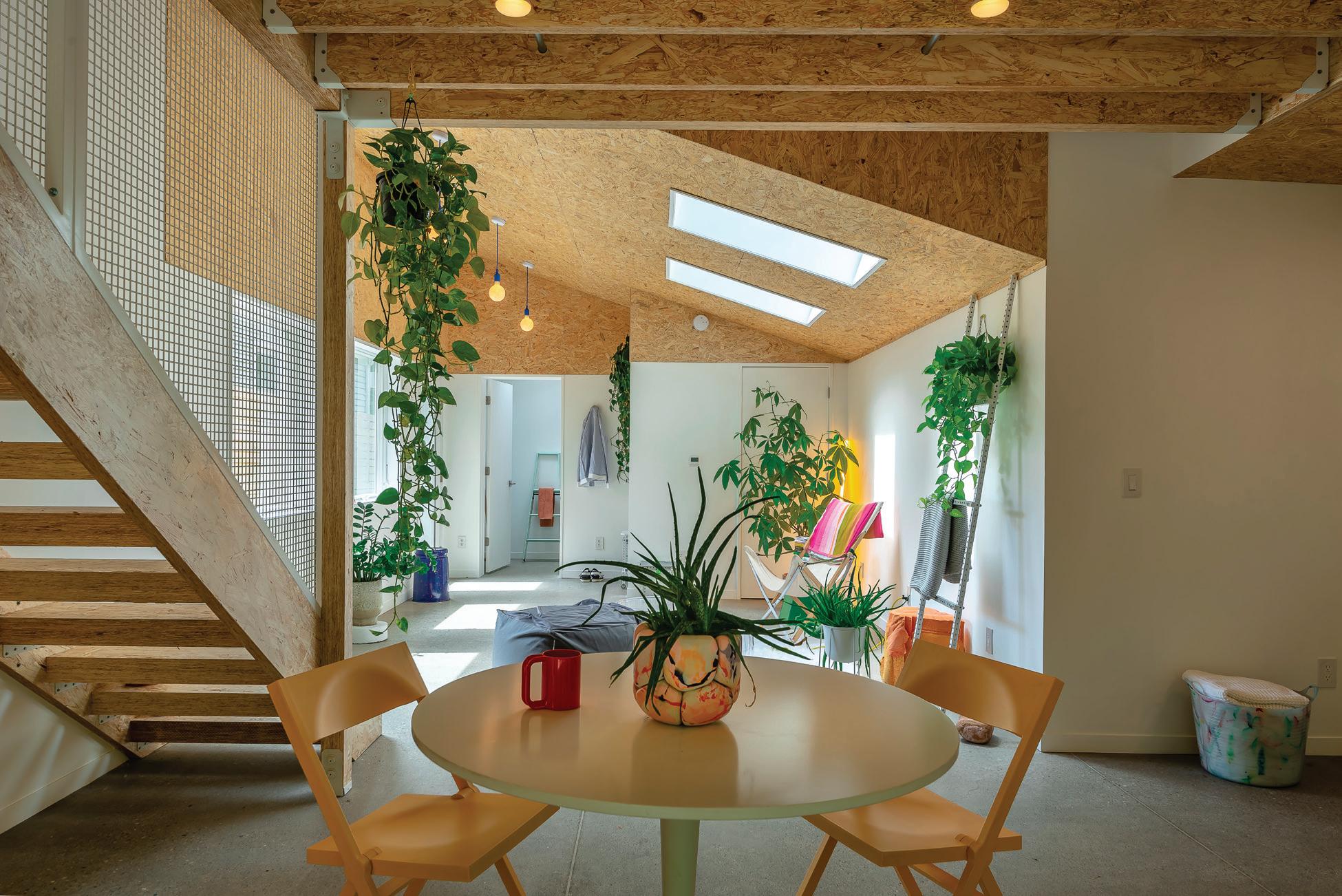
20 T+E+A+M
Faculty-led architecture firm, T+E+A+M, won the 2025 Design Vanguard award — only the second Michigan firm to do so (Architectural Record)
25 From Africa to Ann Arbor to Alabama
Visiting scholars share experiences at Taubman College and Auburn’s Rural Studio
30 Building Relationships
Community Conversation with Lina Chiu, B.S. Arch ’00, principal at Lamar Johnson Collaborative in Chicago, and Elliot Nielander, B.S. Arch ’27
37 Stepping Up and ‘Being a Voice’
Kyle L. Schertzing, B.S. Arch ’05, funds faculty research on Michigan’s Indian boarding schools
42 A Space Where They Can Exhale’
Motivated by her own cancer journey, Amanda Barbour, B.S. Arch ’09, used her studio lessons to launch centers for immunocompromised children and their families
22 At the Frontier of Data-Driven 3D Concrete Printing
Backed by an NSF CAREER Award, Assistant Professor Mania Aghaei Meibodi and her team are pushing the field forward
26 Global Lessons, Lifelong Impact
Taubman College students
Ravi Kumar, M.Arch ’26, and Cayla Ellis, M.Arch ’26, get international experience with Longo Internship
34 Q&A with Tamar Ayalew
Meet the first Robin Guenther Memorial Scholar
38 Preparing For the Future of Planning
Through an endowed scholarship fund, Kevin Bush, M.U.P. ’10, hopes to help remove barriers for the next generation of planners
44 Engineered for Success
24 Connecting the Dots
Professor Martin Murray is working to shed light on a ‘new kind of urbanism’ taking shape in Detroit and around the world
28 What Are You Thinking About?
Rebecca Griswold, M.U.R.P./ M.P.P. ’26; Jordan Hunter, M.U.R.P. ’26; Dylan Ingui, B.S. Urban Tech ’26; Elliot Lavigne, B.S. Arch ’26; Chun (Sheila) Wang, M.Arch ’26
36 It was Because of Michigan’
Robin and Gordon Carrier, B.S. Arch ’79, M.Arch ’81, pay it forward with $1M gift to Taubman College
40 Making a Difference, by Design
Kimberly Montague, FAIA, B.S. Arch ’87, M.Arch ’89, stays grounded by giving back
Andrés Cortés, B.S. Arch ’97, combines a love of buildings and entrepreneurial spirit to co-lead New York architecture and engineering firm 47
Opposite: Northwood ADU (2021) by T+E+A+M is one of the first accessory dwelling units (ADU) to be built under Ann Arbor’s new zoning regulations that passed in 2014. On the cover: Video still from the “Smart Cities Start With You” urban technology video, produced by Lunar North (2025).
Taubman College M.Arch ’25 graduates Marianna Godfrey, Martin Rodriguez Jr., and Orli Schwartz were named to the 2025 Metropolis Future100, recognizing top emerging talent in architecture and interior design nationwide. Faculty nominators had this to say about Godfrey, Rodriguez, and Schwartz:
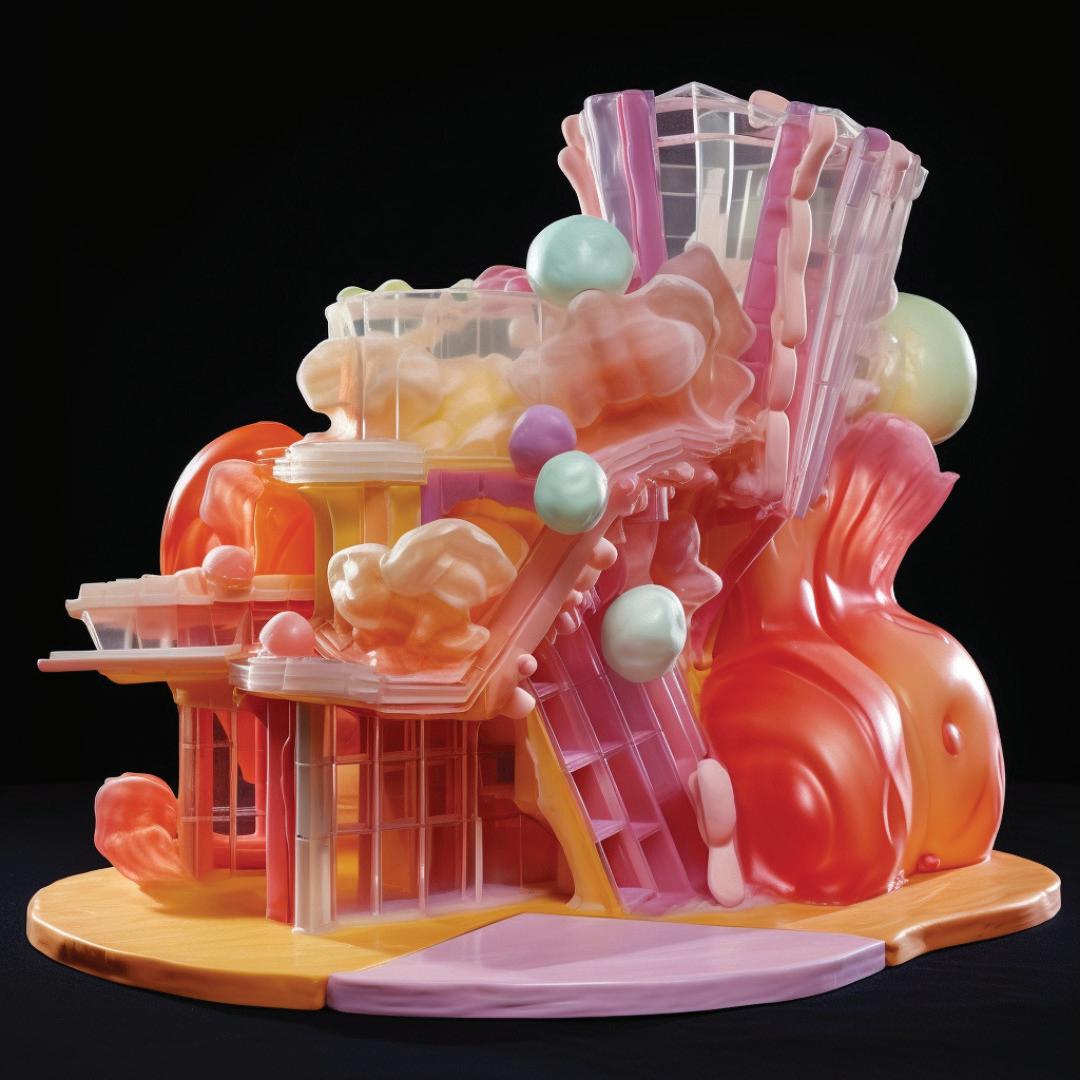
“Martin Rodriguez Jr. is one of the rare students who is ‘all-in’ in all directions of his education. He lives it. He shares it. He champions it. His expertise and attitude will lead the discipline toward more humane and resilient built environments.”
— Neal Robinson, assistant professor of practice in architecture
Rodriguez, who is currently the inaugural TV Lab research assistant at Taubman College, also had his project featured in a two-page spread in the summer print issue of Metropolis
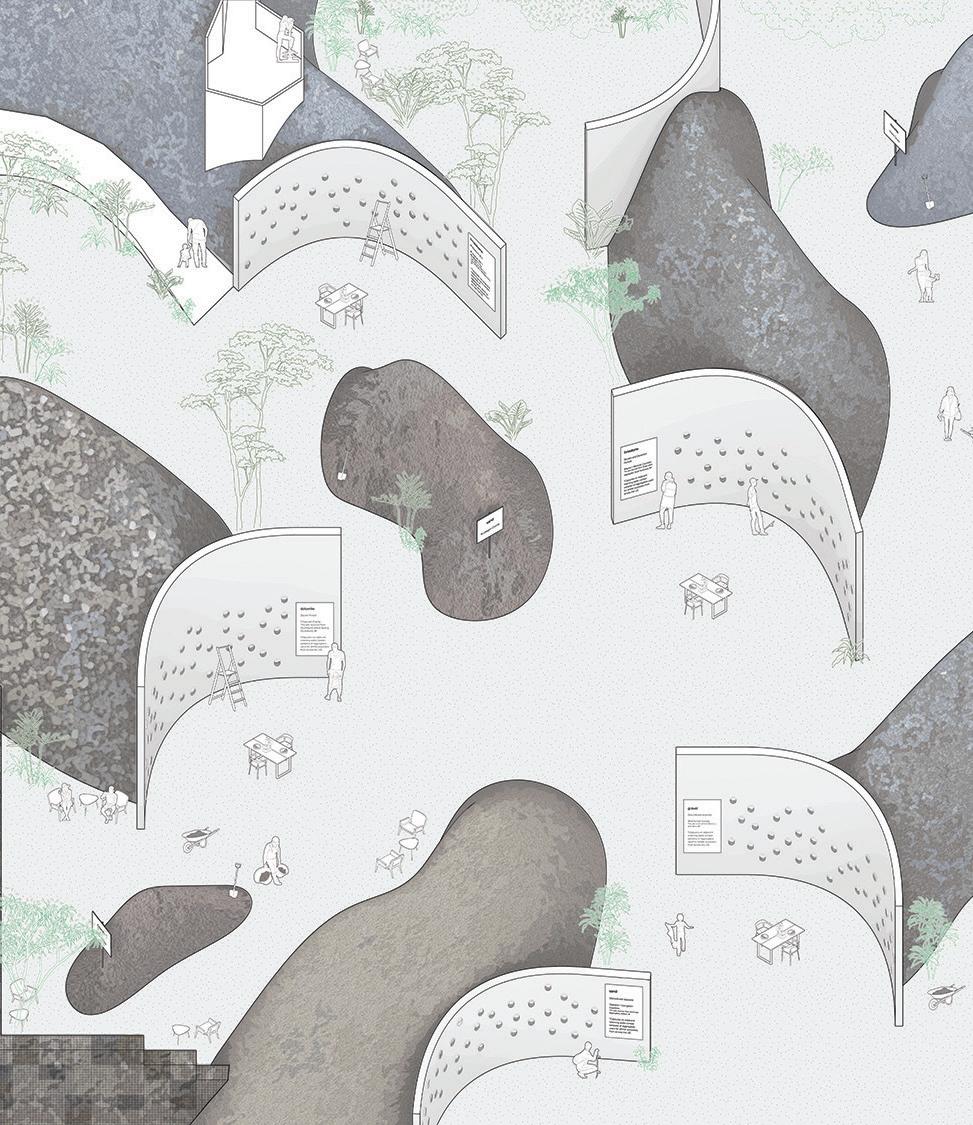
“Orli Schwartz brings a clarity of ideas to studio and works thoughtfully through iterations. She digs into research topics with an analytical mind and synthesizes engaging insights. She designs holistically: materials, systems, engagement with the ground and context, form, light.”
— Gina Reichert,
lecturer

“Marianna Godfrey has proven to be a very talented student and stood out among the rest of her colleagues by demonstrating her capacity to be critical about design, while at the same time being precise, rigorous, and showing an accomplished level of technical competency.” — Jonathan Rule, associate professor of practice
Great stories and inspiring projects are everywhere at Taubman College. Check out the latest student and faculty publications for more.
Dimensions 38 – To Hold
Dimensions is the studentproduced journal of architecture at Taubman College. It seeks to contribute to the critical discourse of architectural education by documenting the most compelling work produced by students, faculty, fellows, and visiting lecturers. Students participate in ARCH466 in both the fall and winter to edit, design, and produce the journal in one academic year.
Agora 19 –Movement
The Agora Journal of Urban Planning and Design is an award-winning, annual, studentrun, peer-reviewed publication. The journal’s staff is composed of graduate students enrolled in
Taubman College’s Master of Urban and Regional Planning and Master of Urban Design programs.
Feed #4 – Design Health
Gradient is an online platform for architecture and urbanism from Taubman College faculty. Organized in “feeds” rather than “issues,” the journal aspires to lean into the potential of digital media formats. Feed #4 (released Winter 2025) focuses on Design Health.
Urban Technology Substack
A biweekly(ish) newsletter about urban technology, the future of cities, design, and design education.
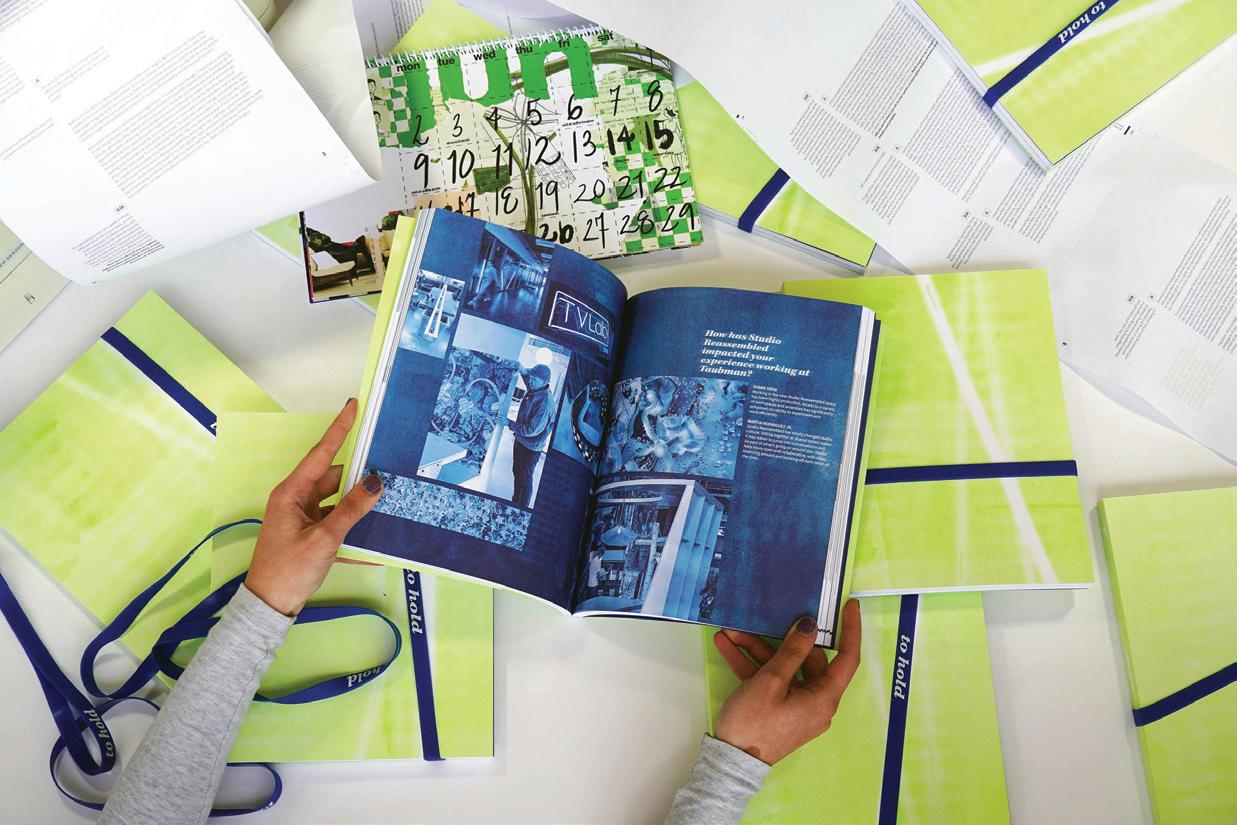

Professor Andrew Herscher published a new book about the history of colonization and Indigenous peoples in Michigan and the role the University of Michigan played in that history. With a long career of activist research collaboration with local communities, Herscher’s work uses the study of architecture to highlight struggles for rights, justice, and democracy.
Under the Campus, the Land: Anishinaabe Futuring, Colonial Non-Memory, and the Origin of the University of Michigan (University of Michigan Press, 2025) narrates U-M’s place in both Anishinaabe and colonial history. It traces the emergence of the university in Anishinaabe imagination, the university’s participation in the colonization of Anishinaabe homelands, Anishinaabe efforts to claim their right to an education, and the university’s history of disavowing, marginalizing, and minimizing its responsibilities and obligations to Anishinaabe people. Building on past discussions held on campus, the book provides a new perspective on the relationship between American universities and settler colonialism.
The 2025 Taubman College Fellows Exhibition, held at the Liberty Research Annex and Gallery, invited visitors to explore the concept of boundaries through the work of five Taubman College Fellows: Ryan Ball, Olaia Chivite Amigo, Angela Cho, Tess Clancy, and Francesca Mavaracchio. The exhibition encouraged audiences to reflect on doors, borders, totems, and vessels — elements that define how we move, see, and belong — while confronting unfinished thresholds and ever-changing spaces. A culminating reception in March featured talks from each fellow.
Since its founding in 1984, more than 100 individuals have completed the Taubman College Fellowship Program, known for driving innovation and reflecting cultural shifts within architecture.
Ball’s “Structure, Control, Cladding” critiques the rainscreen’s separation of aesthetics and function in U.S. architecture, arguing it obscures labor and disconnects people from their environment. His installation presented three nested volumes — circle, square, diamond — to represent rainscreen layers and challenge perceptions of comfort and boundaries.
Chivite Amigo’s “Borders” reimagined the U.S.-Canada border as a dynamic, negotiated territory. Using mapping and narrative, she investigated six regions, revealing the border’s shifting regulatory, cooperative, and contested strategies, and showing how movement, power, and environment reshape borderlands.
Cho’s work is highly manual, abundant in plaster and clay, and grapples with philosophies and techniques of memory, preservation, scale, tactility, originality, and experiential sequence.
Clancy’s “Documenting Demolition” examined Detroit’s demolition program by memorializing homes marked for removal. Through detailed drawings, salvaged elements, and experimental armatures, Clancy prompted viewers to reflect on preservation, memory, and the future of deconstruction.
Mavaracchio’s “Doors” centered on an imposing, twopanel door featuring bas-reliefs inspired by contemporary protest imagery. The piece considers doors as both physical and symbolic thresholds, exploring how repetition shapes meaning and transition.


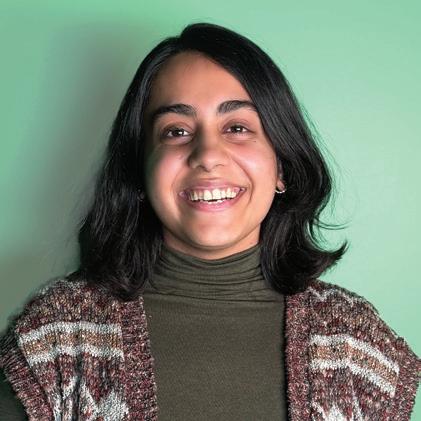

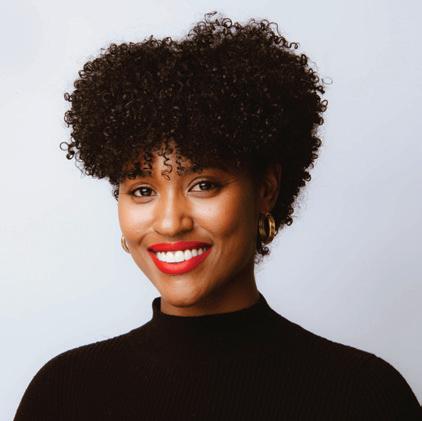

Taubman College students (clockwise from top left) Saj McBurrows M.U.R.P. ’25, Saloni Kapoor M.U.R.P. ’26, Camille Johnson M.U.R.P ’26, Cayla Ellis, M.Arch ’26, and Qingru Yang, M.Arch ’25 were five of 32 U-M graduate students who received Dow’s support to foster sustainability leadership and interdisciplinary collaboration. The highly competitive program offers a $25,000 stipend, project funding, professional development, mentorship from Dow professionals, and collaboration opportunities with partners like Sidewalk Detroit, Hope Village Revitalization, and Michigan’s Office of Rural Prosperity.
Ana Paula Pimentel Walker, associate professor in urban and regional planning, received the prestigious 2025 Marilyn J. Gittell Activist Scholar Award for her community-centered urban planning research. Co-sponsored by SAGE and the Urban Affairs Association, the award honors scholars who connect activism, scholarship, and public engagement.
Pimentel Walker’s work empowers marginalized communities to co-create urban planning projects. She was formally recognized at the International Conference on Urban Affairs in April 2025.
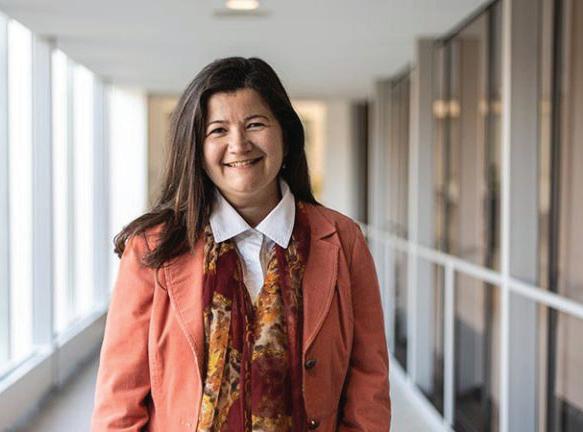
Two Taubman College Master of Urban and Regional Planning student teams won both of the 2025 Outstanding Graduate Student Planning Project awards from the Michigan Association of Planning — the fourth consecutive year U-M has earned both honors. One team aided Michigan’s Brownfield Renewable Energy Pilot Program, identifying strategies to support renewable energy on contaminated sites. The other worked with Ann Arbor’s Neighborhood Institute, evaluating challenges and proposing alternate locations for a planned terminus for a new U-M automated transit system. Both projects addressed real-world planning issues and were recognized for their innovation and impact.
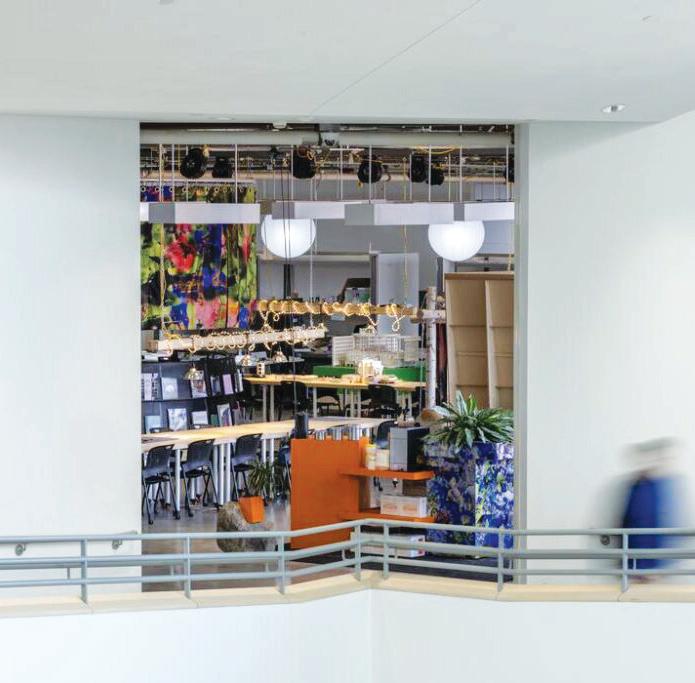
REASSEMBLED STUDIO REASSEMBLED STUDIO REASSEMBLED
Taubman College’s Studio Reassembled received international recognition as a finalist for both Architizer’s 2025 A+Award in Architecture +Learning and a The Plan Award in the education category. This innovative open studio, launched in Fall 2024, fosters active learning and interdisciplinary collaboration through flexible spaces and on-site expertise. Shortlisted alongside prestigious firms, Studio Reassembled highlights Taubman College’s leadership in design for education.
EXTENTS, a design collaborative led by Taubman College faculty
Cyrus Peñarroyo and McLain Clutter, was invited to participate in the 2025 Chicago Architecture Biennial. This year’s Biennial, “Shift: Architecture in Times of Radical Change,” features nearly 100 participants from 30 countries and runs from Sept. 19, 2025, to Feb. 28, 2026 at the Chicago Cultural Center and other venues across the city.
Their project, “Time Capsules: An Anti-Antenna for the City of Chicago,” examines how alternative spatial arrangements of media consumption might disrupt contemporary media habits. Through the creation of a raree, an antique spatial format of collective media consumption — one that starkly contrasts today’s increasingly isolated and insular media consumption formats — the project stages new relationships between people, space, and technology to critique contemporary media formats that extract and monetize our attention, foment societal division, and speciously evangelize innovation.
Nested within a tall aluminum frame are multiple capsules composed of copper-integrated faraday fabric. Inside each, a different vantage of the surrounding gallery is viewable through lensed apertures. Visitors are invited to engage the installation in the round to view through peepholes in various surfaces and negotiate one another in space — while they engage the enclosed worlds within.
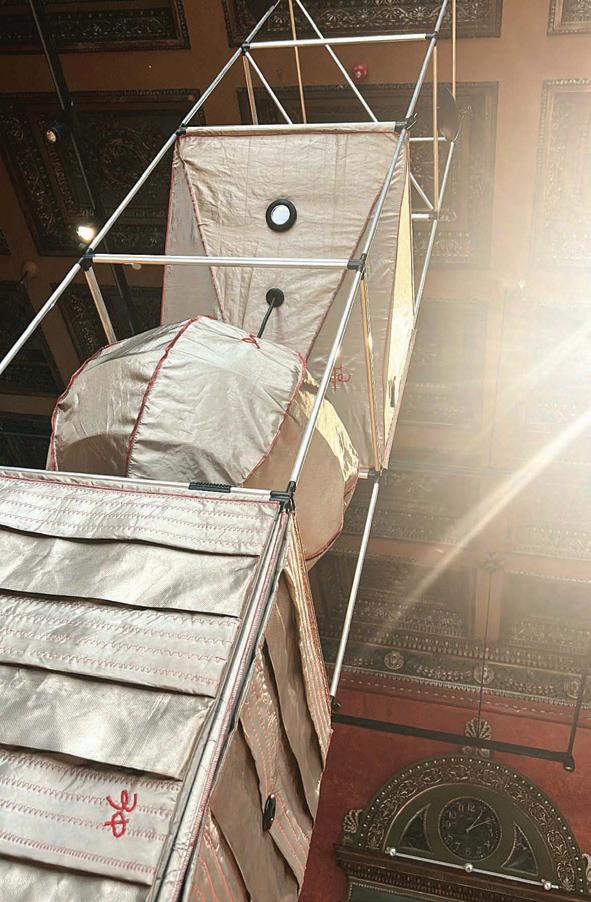
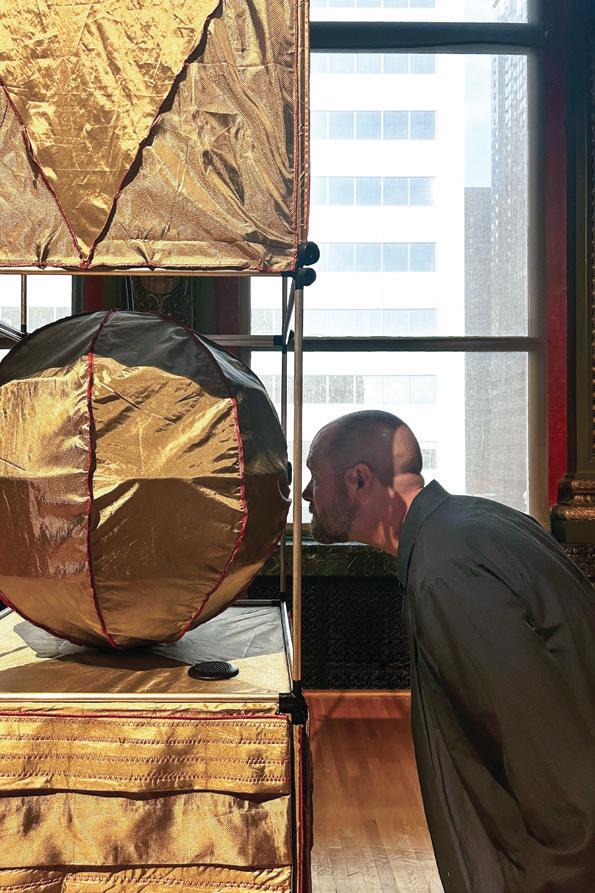


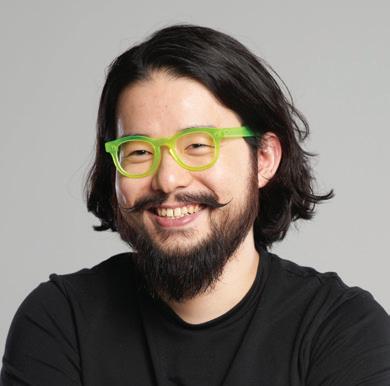
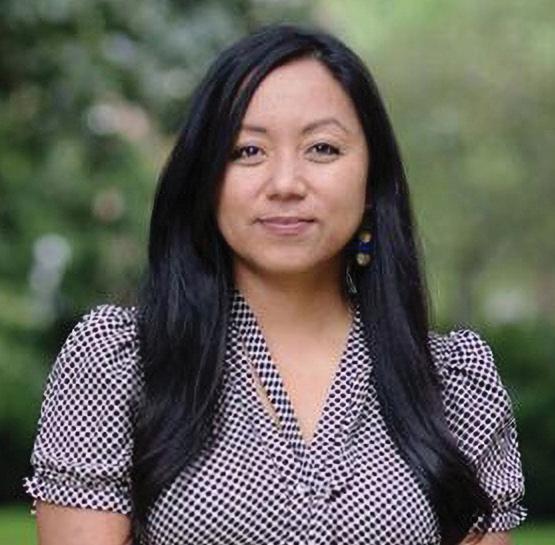
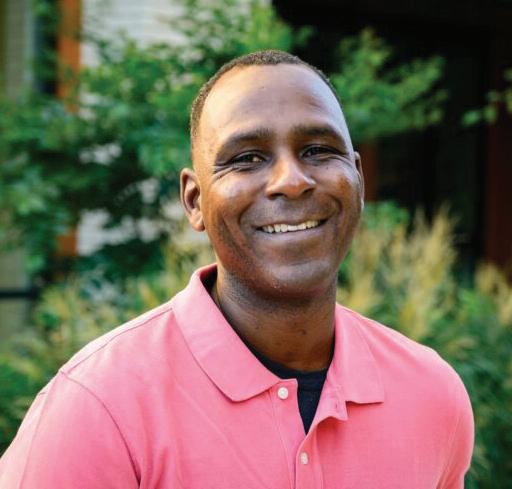





Taubman College welcomes eight new faculty members and two fellows for the 2025-2026 academic year, enhancing expertise in urban technology, real estate, urban planning, and architecture.
Wonyoung So, Ph.D., joins as assistant professor of urban technology, focusing on the intersection of data, technology, and urban planning, with particular attention to housing and democratic participation for marginalized residents.
Sheng-Hung Lee, Ph.D., will start as assistant professor of urban technology in winter 2026, integrating design, technology, and systems thinking to address issues like aging and urban service innovation.
Ron Bronson becomes assistant professor of practice in urban technology, specializing in service design and user experience strategy. He has extensive experience in applying digital transformation across government, enterprise, and civic tech.
Violet Whitney becomes adjunct assistant professor of practice in urban technology, pushing the boundaries of human-computer interaction and digital agency and helping communities engage with physical and digital environments beyond traditional screens.
Andrew Farbman, adjunct practice instructor in urban and regional planning, brings deep knowledge
in commercial real estate, spanning acquisitions, development, and finance across several Midwest markets.
Jill Ferrari joins as adjunct practice instructor in urban and regional planning, having spent three decades in real estate development, legal practice, and consulting, to focus on attainable housing, mixed-use projects, and brownfield redevelopment.
Odessa Gonzalez Benson, Ph.D., associate professor at U-M’s School of Social Work, joins as associate professor of urban and regional planning, focusing on refugee resettlement, migration, capacity-building, and research supporting refugee-run organizations.
Roshanak Mehdipanah, Ph.D., associate professor in the Department of Health Behavior and Health Equity at U-M’s Ford School of Public Health, joins as associate professor of urban and regional planning. Her research focuses on urban health, including urban renewal and gentrification and their impacts on health inequities.
Nitzan Farfel, architecture design fellow, explores adaptive infrastructure and spatial politics through visual media and critical documentation.
Gus Wendel, Ph.D., Fishman Fellow, researches urban planning’s role in the formation of sexual spaces and intersectional public space design, with a focus on urban humanities.
The U-M Board of Regents has approved promotions for outstanding Taubman College faculty members, recognizing their significant contributions to architecture, design, and scholarship.
McLain Clutter has been promoted to Professor of Architecture, with tenure. As co-founder of EXTENTS, Clutter works to examine urbanism’s intersection with digital culture, emphasizing architecture’s nuanced societal impact. His research and creative work have been widely published and exhibited internationally, and his leadership roles have advanced both the college and the field.
El Hadi Jazairy has been promoted to Professor of Architecture, with tenure. As co-founder of DESIGN EARTH, Jazairy is a leading voice in architecture’s engagement with the climate crisis, reframing environmental challenges through a blend of research, practice, and theory. His practice has been recognized globally in exhibitions and through prestigious awards.
Wes McGee has been promoted to Professor of Architecture, with tenure. McGee is a pioneer in computational design and robotic fabrication. As co-founder of Matter Design and director of the Taubman College Digital


Fabrication and Robotics Lab (FABLab), his innovative research links technology and architecture, earning international recognition and multiple patents.
Anya Sirota has been promoted to Professor of Architecture, with tenure. A founding principal of Akoaki, Sirota’s work blends design, urban engagement, and cultural strategy. She is celebrated for advancing participatory design and impactful community initiatives, both locally and internationally.
Cyrus Peñarroyo has been promoted to Associate Professor of Architecture, with tenure. He investigates architecture’s relationship to digital media and urbanism through practice and scholarship. His work through EXTENTS, partnerships, and publications pushes critical conversations on spatial justice and digital culture.
Jonathan Rule has been promoted to Associate Professor of Practice in Architecture. Through his partnership at RuMor Studio, he bridges practice and academia, with award-winning projects and research on construction innovation and adaptive reuse.
Additionally, John Marshall of Stamps School of Art & Design has been promoted to Professor of Art and Design, with tenure, and Professor of Architecture, without tenure. Marshall’s cross-disciplinary work in design, digital fabrication, and public engagement extends impact through acclaimed practices and collaborative research.
Congratulations to all for these well-deserved promotions.


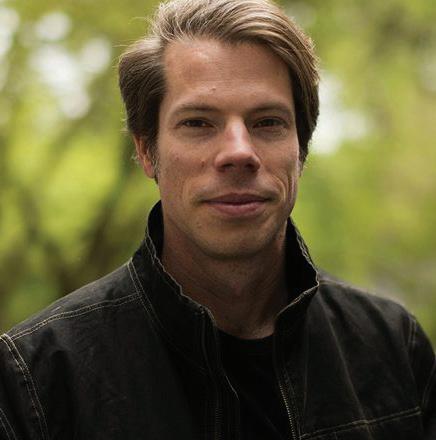




Taubman College architecture faculty presented work at the 2025 Venice Architecture Biennale, running May to November 2025.
Professor El Hadi Jazairy, co-founder of DESIGN EARTH with partner Rania Ghosn, presented two ecofeminist projects (above, left): “A World Previous to Ours,” which explores missing narratives in extinction histories through a stratified earth model, and “Elephant in the Room TalkBox,” a climate fable featuring an elephant matriarch, both addressing climate change and environmental storytelling.
Associate Professor Lars Junghans collaborated with Belgian architect Steven Schenk on a low-carbon humidity control system made of hempcrete, featured in the Belgian Pavilion’s “Building Biospheres” exhibit (above, right). Their device offers a sustainable alternative to energyintensive dehumidification, aligning with the exhibition’s focus on plant intelligence and passive environmental comfort.
Taubman College professor Łukasz Stanek received a 2025 Graham Foundation grant for his upcoming book, The Gift: Spaces of Global Socialism and Their Afterlives (Jovis, 2026). The book, featuring essays on gift-giving’s impact on urbanism in Africa and Asia, builds on Stanek’s research into global urbanization and North-South architectural exchange. The Graham Foundation awarded 42 grants from over 600 applications this year.


Taubman College faculty Lisa Sauvé, M.Arch ’11, and Adam Smith, M.Arch ’11, co-founders of SYNECDOCHE, received a special mention from Architizer for their Gamma MKE project in Milwaukee. Recognized in the commercial retail category, the project connects piercing with personal ritual and uses prefabricated walls for sustainability and customization. Architizer’s A+Awards honor outstanding architecture projects worldwide.

Taubman College’s first-of-its kind Urban Technology program keeps evolving to meet the needs of today’s students and cities
T.F. Chen, B.S. Urban Tech ’25, was excited by a brand new degree he’d learned about at the University of Michigan, one that focused on planning and designing for technologically advanced cities. He was also accepted to a traditional architecture and planning program in his home country of Canada, but it didn’t feel like the right fit for him. His heart was set on Urban Technology.
“As someone who is very enthusiastic about cities and who wants to be more involved in designing and planning for cities and the capabilities of handling these new urban systems that are emerging, I decided to bet on this program and come to Michigan,” Chen says.
Today, that bet has paid off; Chen started working in his dream field for a transportation consulting firm in San Francisco earlier this year. Like others from his inaugural graduating cohort, he learned to work through the ambiguity of studying an emerging discipline and appreciates the strong bonds developed along the way.
“It’s almost like we were all creating this curriculum together, even as students, helping the faculty shape it for future cohorts through feedback about the classes, the trips we took, the career opportunities we were exposed to,” Chen says.
And the college has responded, with new offerings, new requirements, and some new approaches to graduating the world’s first urban technologists.
“Building this unique degree with faculty, alumni, industry experts, and expert staff was a highlight of my career,” says Jonathan Massey, dean at Taubman College of Architecture and Urban Planning. “Even better has been seeing students respond with intelligence, creativity,
and passion. They have co-created this degree by shaping its curriculum and culture profoundly.”
For the first time this fall, incoming Urban Technology students started their Taubman College journey in late August, as opposed to January. Bryan Boyer, faculty director of the Bachelor of Science in Urban Technology degree, says the change added some excitement for the new cohort — and it’s not just because of the better weather.
“There’s always a certain level of energy when the fall semester starts,” Boyer says. “It’s exciting to begin the year with vitality, not just in our program, which has always been there, but really across campus. So now we’re fully participating in that fall groundswell of activity that occurs all across the Ann Arbor campus, which is awesome.”
Helping to generate more excitement, the program released a new video in August produced by Lunar North. It combines bright, colorful animation with student and faculty insights on what Urban Technology is and why it should be studied. That energy can also be attributed to more students in the building, with the incoming cohort of 60 tripling the size of the inaugural group, and a total of 170 students across cohorts. And with the experience of four previous cohorts to draw on, Boyer says students are entering as the “most informed” to date.
The curriculum was also adapted to better support students academically. Previously an elective course, Urban Informatics, taught by Xiaofan Liang, assistant professor
Video still from the “Smart Cities Start With You” urban technology video, produced by Lunar North (2025).
of urban and regional planning, is now a required course. For students more interested in entrepreneurship and innovation, new courses in Foresight and Prototyping add nuance to the way students learn about design.
“These additions to the curriculum come from seeing how students have navigated the program and two clusters of students that emerged for us,” Boyer says. “There’s a group of students who are more interested in analytics — using sensors, data, and computational power to understand how cities operate and urban outcomes. The other group is more excited about creating stuff. That could be somebody who wants to become a UX designer, an entrepreneur, or someone who wants to create new government policies and programs.”
To teach these expanded offerings, the program hired four faculty members in 2025, including two recent doctoral graduates from M.I.T.: Wonyoung So, Ph.D., specializes in data visualization and equitable technology; and ShengHung Lee, Ph.D., brings a focus on planning for longevity in urban environments. Joining as professors of practice, Ron Bronson and Violet Whitney have both taught courses previously. Bronson will teach service design in the winter, and Whitney will teach an elective on “spatial computing”

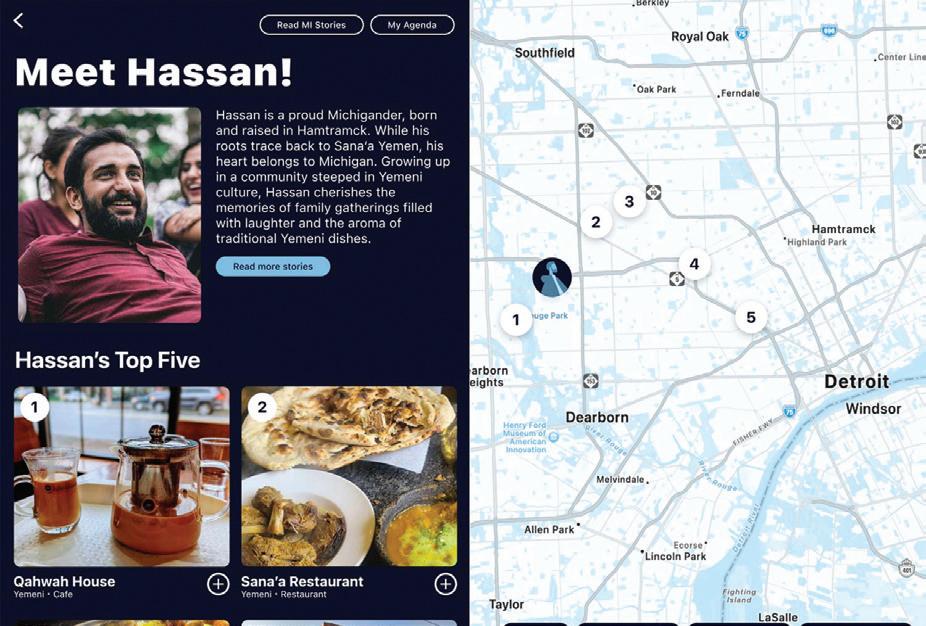
that will eventually seed into the new prototyping class. Continuing with the program are Emily Kutil, M.Arch ’13, lecturer in architecture, who has been co-leading the program’s Cities Intensive, and Lisa Sauvé, M.Arch ’11, M.S. ’14, assistant professor of practice in architecture and co-founder of Synecdoche design studio, who brings a background in design and entrepreneurship.
“It’s really important for us to have a balance of tenure track and practice track people who can bring deep structured thinking in addition to more emergent professional insights,” Boyer says.
Two things that won’t change are a commitment to engaged learning through exercises like the Cities Intensive, which brings students to three urban areas — recently, Ann Arbor, Detroit, and Chicago — to observe and explore before co-drafting their own model metropolis, as well as an emphasis on studio-based learning.
“Our studio-based pedagogy really gives us a different environment in which to educate the students compared to other tech-focused programs,” Boyer says. “It’s a more intensive setting. They have more contact with professors. We’re able to get into some nuanced problems and develop interesting ideas about how we might respond to those out in the real world.”
Another thing that has been consistent is the bond among students. “My hope when we started this, is that the students would get an education that’s bigger than the classroom,” Boyer says. “And what I saw with the first cohort, and I see in the subsequent cohorts as well, is that there’s a strong bond. We’re big enough that you don’t get tired of working with the same people all the time, yet small enough that you get to know everyone, and we can be a little community within the village of Taubman College, within the metropolis of the University of Michigan.”
Aakash Narayan, B.S. Urban Tech ’24
As a development analyst for Landmark Properties, Aakash Narayan, B.S. Urban Tech ’24, spends a lot of time thinking about one question: “Why would someone want to live here?”
Left, from top: Student projects, “Fourth Spaces” and “WorldWide MI,” aim to make Michigan more attractive to young people. Opposite, from top: A real-time plant data sensor network developed for student project “Optimizing Natural Maintenance in Urban Spaces.” Students during a Cities Intensive trip, Detroit, MI.



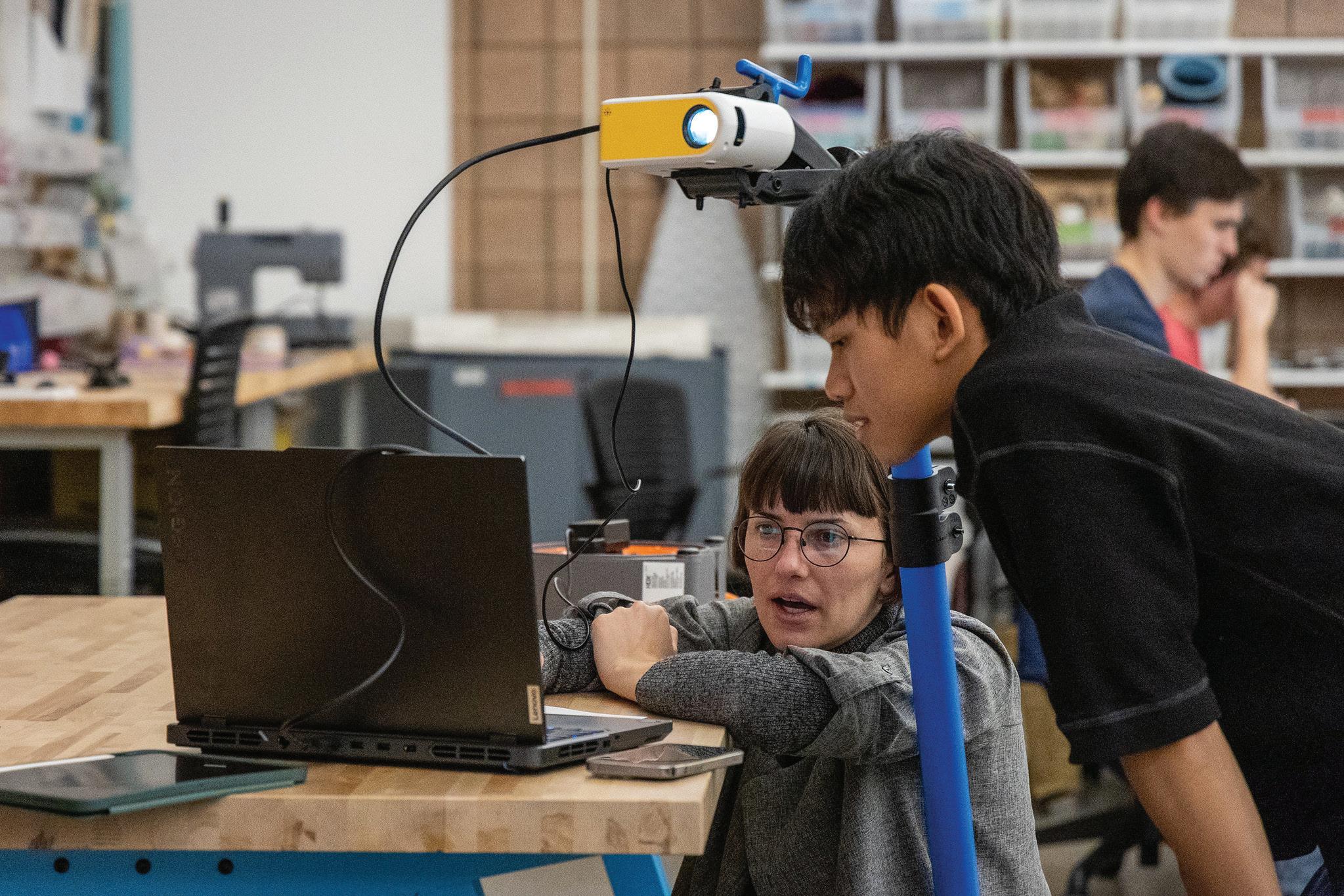
“
Our studio-based pedagogy really gives us a different environment in which to educate the students compared to other tech-focused programs. It’s a more intensive setting. They have more contact with professors. We’re able to get into some nuanced problems and develop interesting ideas about how we might respond to those out in the real world.”
BRYAN
BOYER , FACULTY DIRECTOR OF THE BACHELOR OF SCIENCE IN URBAN TECHNOLOGY, ASSOCIATE PROFESSOR OF PRACTICE
Landmark is an Atlanta-based real estate firm specializing in student housing communities around the United States, the UK, and Ireland. Narayan was hired there over the summer after completing an internship in 2024.
Working with a team, he helps analyze sites by calculating risks and predicting financial performance. It’s fast-paced work that requires quick thinking, teamwork, and iterating in real time to keep projects moving forward on deadline. The qualitative data analysis falls in line with his urban planning coursework when it comes to zoning codes. But ultimately, he needs to determine what will make an urban area attractive to tenants. “That human-centered approach of putting yourself in someone else’s shoes and using that thought process to carry out all the other functions,” was learned in the urban technology program.
“I’m creating a lot of the assumptions for the financial model,” Narayan says. “Does it make sense to add retail here? How much is the retail rent? What kinds of tenants would we get? A lot of it boils down to analyzing a place and why someone would want to live there, and then a lot of the financial metrics are taken from answering that singular question.”
While at Taubman College, Narayan also co-founded the Urban Technology Student Organization (UTSO), where he learned to get creative with securing funding and organize and plan meetings — skills he still employs today. Although his work is far from what he was doing in his upper studio courses, Narayan says the basic principles are central to how he operates. “That kind of workflow that we had in studios is my workflow here,” he says. “Knowing how to take feedback and adjust, and all of those kinds of intangibles from the Urban Technology course structure, that’s replicated here.”
Opposite, from top: Students collaborating in the Urban Technology studio at Taubman College. Faculty and students in Prototyping course.
When Hannah Bernstein, B.S. Urban Tech ’25, started at U-M, she knew she wanted to make an impact in the field of sustainability. After starting with the College of LSA with plans to enter engineering, she considered transferring to the School for Environment and Sustainability before making the move to Taubman College during her junior year.
“Urban Technology specifically seemed like a good mesh of all of these different interests, because it was multidisciplinary, and I liked the size and focus of the program,” she says. “Even though it’s broad and you can do anything with it, it also seemed more like I could do exactly what I wanted, which was to work on sustainable development.”
Today, Bernstein is a renewable development analyst with global clean energy company Invenergy, where she acts as liaison between stakeholders, including landowners, engineers, environmental protection agencies, lawyers, and community leaders, while ensuring respect for the land itself. Although she’s based in Chicago, the team she works with is focused on developing scalable renewables — including solar and onshore wind power and battery storage — in Michigan, which “hits close to home” for the Ann Arbor native.
Bernstein first connected with Invenergy through an internship in 2024, during which she helped analyze prospects for new developments based on Geographic Information Systems data and other inputs from previous projects to help determine which sites might be most viable and how responsive landowners might be. She credits her Urban Technology background with developing her critical thinking and comfort with working across sectors. A class in stakeholder relations — UT 201 Change-Making in Cities — was especially formative.
“The coursework really focuses on a large range of different factors that play into each other, which is the same thing that I’m doing with renewable energy development,” she says.
— T.F. CHEN , B.S. URBAN TECH ’25 “
What sets Urban Technology apart, to me, is the culture we have, not just as a cohort, but the entire program. There’s a community that’s like, ‘Let’s do this together, let’s build this and shape this curriculum together,’ which is something I really appreciate.”
T.F. Chen, B.S. Urban Tech ’25
Ever since he was a kid, Chen has been fascinated with cities and transportation.
“I used to draw fantasy maps and imagine what cities would look like,” Chen says. “I would sketch spaghetti networks of highways and train networks.”
So when the Taubman College Career Fair helped connect him with an internship with San Francisco consulting firm Fehr & Peers in 2024, it was a dream opportunity years in the making. While there, Chen applied his experience from coursework to take the lead on a community engagement session. Drawing from Urban Technology principles, he developed survey questions and a scavenger hunt activity that got residents thinking about their neighborhood, what improvements had been made already, and what needs they still had.
Earlier this year, Chen was hired as Engineer Planner I with the firm, where he now works on data visualization and mapping to help tell the story of how the firm’s transportation projects are improving communities, as well as community engagement to ensure its recommendations are appropriate for not just the physical environment, but also the culture of local residents.
Looking back on his time in the Urban Technology program, he says being among the first to go through and have a hand in shaping it gave him and his cohort a shared sense of confidence.
“There’s this kind of common sentiment between the people in our cohort: ‘If you have something uncertain, come to us. We’re used to it. It’s all good.’”
In an August newsletter to students, Boyer noted that, since its inception, the Urban Technology program has been working to define itself. Those definitions have focused on the combination of urbanism, technology,
Opposite, from top: Class of 2025, the first graduating class of Urban Technology students, in the studio space. The Incomplete City: Design Workshop
and design; the ways data, connectivity, computation, and automation affect how we experience and shape cities; and the digitalization of the built environment. This year, a new definition emerged, one that encompasses all of the above: a new liberal arts for the urban era.
When describing their degrees to peers, colleagues, and potential employers, Narayan, Bernstein, and Chen all get the same responses: “What is that?” or “Tell me more.” The answers vary depending on who’s talking and who they’re talking to.
“Once you find your pitch, a lot of people get pretty excited about what it is and what your background is,” Narayan says. “A lot of times I describe it as an urban planning degree with a data design component.”
“I give the spiel that it’s cities, design, and code, and it’s kind of like a layer on top of urban planning,” Bernstein says. “But to me, it means sustainable development; that’s why I pursued urban technology.”
As for their own feedback for the program and future cohorts, Bernstein recommends students try some projects outside of their focus area, if just for the added experience with a new set of problems or tools. Looking back from his current role, Narayan suggests more exercises with grounded parameters, where students design solutions for real-world time and budget constraints. Chen is excited about the prospect of the new prototyping curriculum and a deeper integration between coding and design.
“What sets Urban Technology apart, to me, is the culture we have, not just as a cohort, but the entire program,” Chen says. “There’s a community that’s like, ‘Let’s do this together, let’s build this and shape this curriculum together,’ which is something I really appreciate.”
— Eric Gallippo
Watch the full-length Urban Technology video by Lunar North.
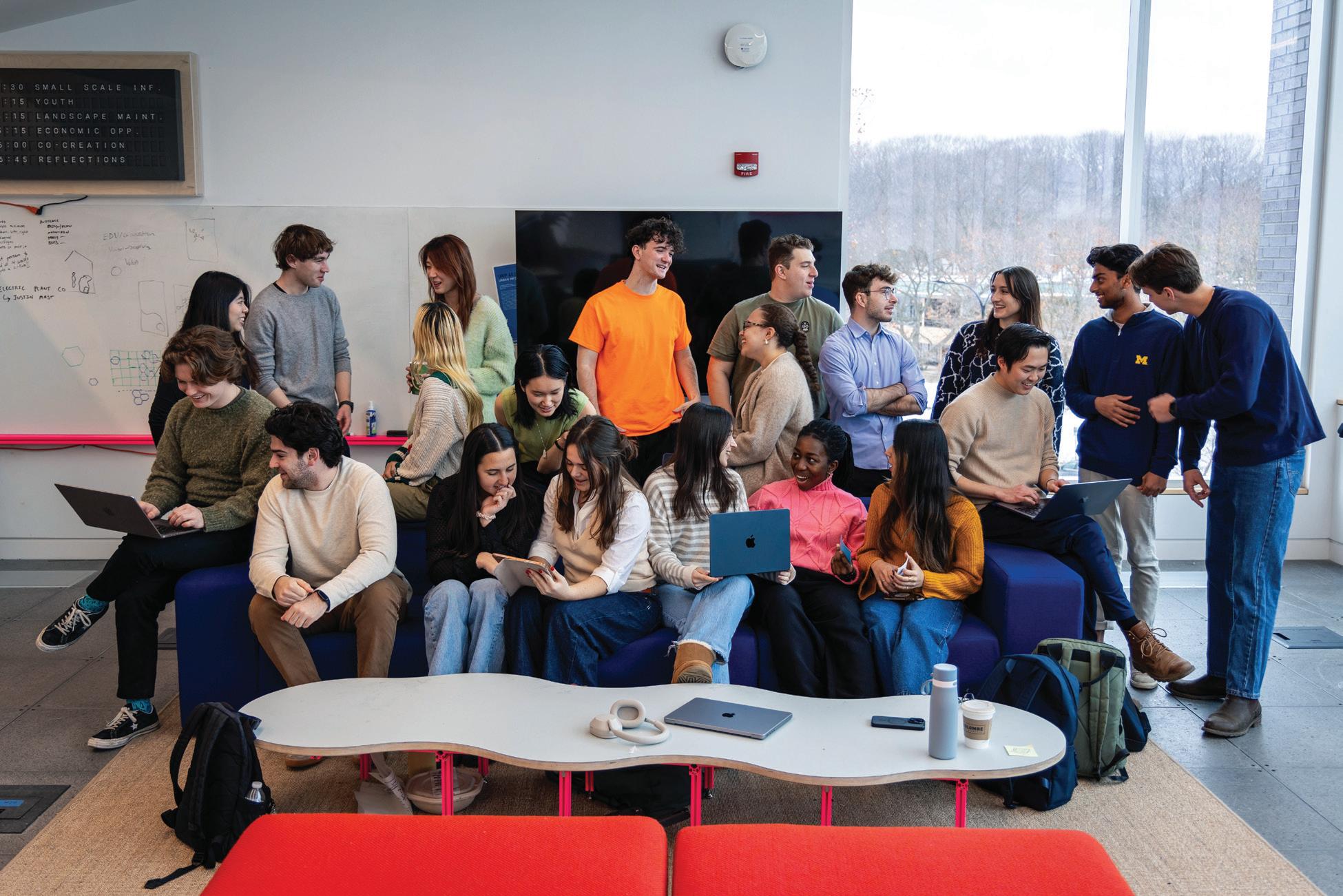

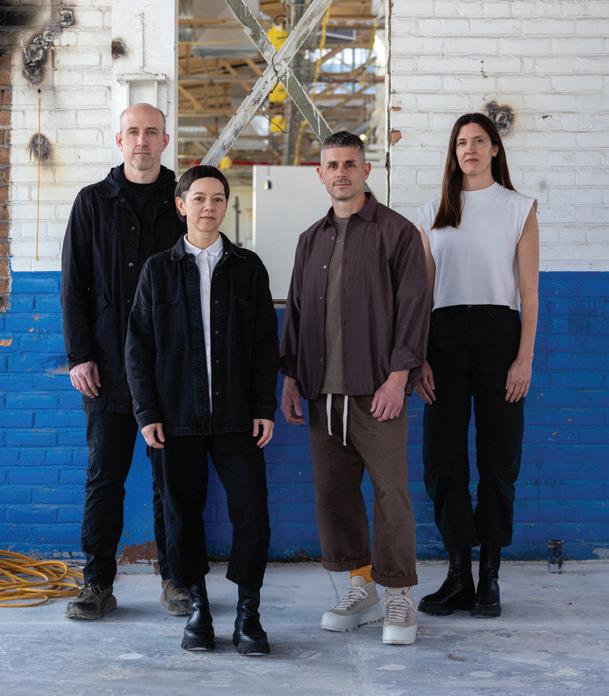
Republished from Architectural Record (June 2025) with permission: T+E+A+M, won the 2025 Design Vanguard award — only the second Michigan firm to do so.
FOUNDED: 2016
KEY COMPLETED PROJECTS:
The Warehouse, 2024, Hanover, New Hampshire; Northwood; ADU, 2021, Ann Arbor, Michigan; 4 over 4, 2020, Detroit; Living Picture, 2017, Lake Forest, Illinois; Ghostbox, 2017, Chicago
KEY CURRENT PROJECTS:
Residential Addition; Post Rock (both in Ann Arbor, Michigan); Building in a Building; Rehab for America: The New Starter Home (both in Detroit); Home for Healing Community Center, Ypsilanti, Michigan tpluseplusaplusm.us
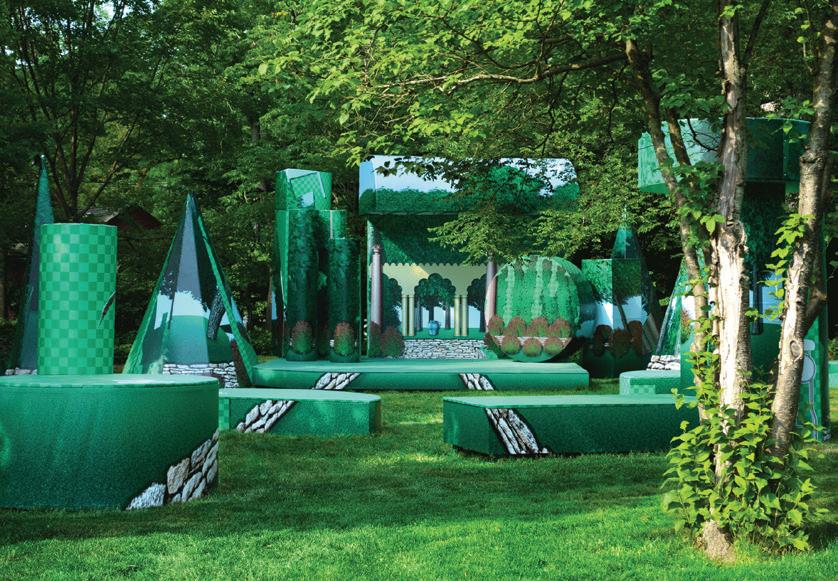
Living Picture Renderings of Howard Van Doren Shaw’s design for a garden stage at his home, Ragdale, are projected onto 3D shapes arranged on the original site in Illinois. The project blends past and present, real and fake, set and surroundings.
To this question, the Ann Arbor, Michigan–based firm T+E+A+M offers an encouraging answer. Its four co-founders, University of Michigan faculty Thom Moran, Ellie Abrons, Adam Fure, and Meredith Miller, came together for a speculative project presented at the 2016 Biennale — a proposal to transform Detroit’s infamous Packard Plant into a campus dedicated to material reuse, one where spolia from the abandoned buildings would be reconstituted and used to construct formally unruly interventions across the site. Since that splashy debut, the principals have continued to teach and pursue research, much of it centered on material experimentation. They have also endeavored to make the always treacherous jump from theoretical to real territory and are now on the cusp of completing one of their largest projects: Building in a Building, a commercial hub on Detroit’s east side surgically inserted behind a half-demolished, centuryold structure.
From the start, the principals were united in rejecting then-dominant notions of the architect as heroic form-maker. All four received their master’s degrees in the years preceding the 2008 financial crisis, and each ended up pursuing fellowships and teaching opportunities in the difficult years that followed. Having been sufficiently disabused of any lingering romantic myths about architecture, the group set out to find its own way of working. “We’ve tried to forge a different model of practice, not from a top-down ideological position, but something more emergent,” says Abrons, 49, noting a desire to balance an enduring interest in design
with broader efforts to make a “meaningful impact in the world.”
The group has realized this effort in an intriguing variety of collective and individual ways — from participation in the city planning process in Ann Arbor (Abrons serves on the planning commission) or efforts to redesign construction processes (Fure, 44, and Moran, 46, are pursuing builder’s licenses) to the development of a new cladding product made from foundry sand and recycled polymers (a project led by Miller, 45, and Moran). All four continue to teach at Michigan, which has enabled the firm to avoid relying on paying clients: much of its work is financed by grants, and its principals make use of space in a university building.
In a sense, T+E+A+M’s slate of commissioned projects takes it full circle back to a client-driven process. Fortunately, the firm’s penchant for experimentation and rethinking materiality is not lost in this work; if anything, built projects deepen and amplify these interests by offering opportunities to test them on the ground. “What’s exciting to us is the material assembly of things,” says Moran, and it is gratifying to see how the notions of reconstitution and reuse introduced at the Biennale have made their way into Building in a Building. There, on a narrow corner lot, a striking hybrid is taking shape as the facade of the existing structure wraps around a generous public courtyard and meets the dark form of the new volume rising behind it. The quiet restraint of the design — a shift from the bold forms of the Biennale proposal — show T+E+A+M’s evolution from a polemical to a pragmatic position, and suggest that it has discovered a design sensibility befitting its emergent model of practice. — Izzy Kornblatt
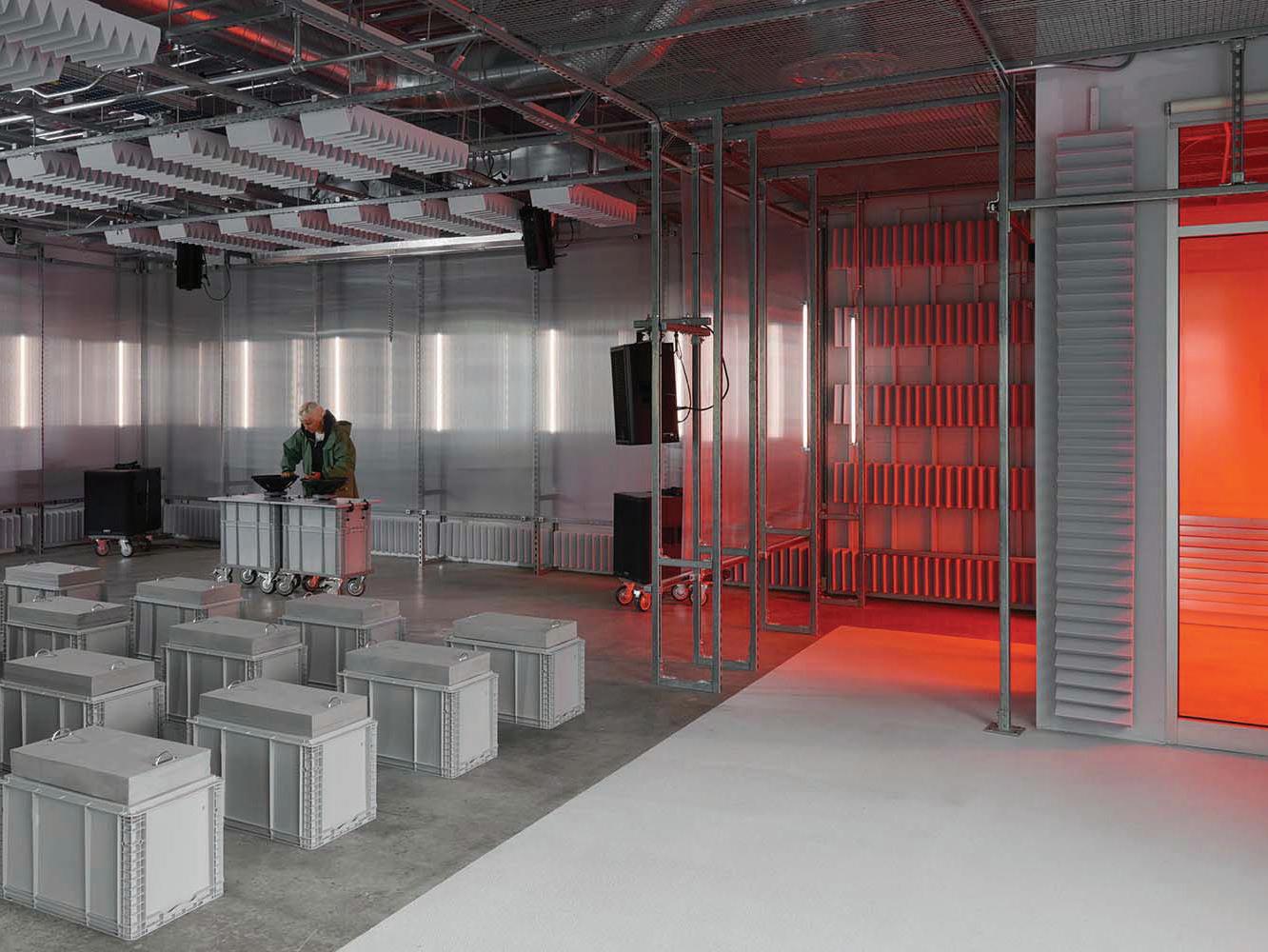
Designed as a prototype for low-cost middle-density housing, this project provides eight apartments that rent at below-market rates. T+E+A+M saved money by using a prefabricated shallow foundation that minimized site work, lightweight composite wall and roof panels that expedited on-site assembly, and all-electric utilities to eliminate need for gas lines.
The architects converted a commercial space into a flexible performance venue that also serves as a hub for teaching and creative practice in the sonic arts at Dartmouth College. Performance spaces can be reconfigured, allowing artists to experiment and test new ideas. Infrastructure for sound and lighting is exposed, giving them a visible role in the design.



Asked to renovate a 100-year-old commercial building on Detroit’s east side, the architects decided instead to preserve just part of the old structure, add a new building behind it, and create a courtyard between the two. The complex, scheduled to open this year, will serve as a neighborhood hub with restaurants and retail spaces.


TODAY’S BUILT ENVIRONMENT is under significant pressure from multiple complex challenges, including material and labor shortages, ambitious energy goals, and climate risks such as flooding, earthquakes, and wildfires.
To Mania Aghaei Meibodi, assistant professor of architecture at Taubman College, these overlapping challenges present an opportunity to pursue design and construction processes that address all of them at once. “Adopting 3D printing and machine learning will elevate the built environment, and the lives of people and other species, by expanding what we can design and build, boosting performance, enabling mass customization, raising productivity, and cutting waste,” she says.
Aghaei Meibodi is a leader in developing novel computational design and fabrication methods for large-scale manufacturing in the building industry. She says machine
learning’s capacity to analyze thousands of measurements enables it to spot patterns humans miss, opening new doors for 3D printing intricate geometries at scale. “It works with designers to predict and even generate high-performance components, and it recommends manufacturing settings so parts are built right the first time, with data to back it up.”
High-performance elements are inherently complex, not as a goal, but rather from integrating multiple functions into a single part. Aghaei Meibodi says that complexity becomes an opportunity with 3D printing rather than a constraint.“The integration of robotics and 3D printing has demonstrated strong potential to produce high-performance parts that are material-optimized, structurally superior, lightweight, and capable of combining multiple functions within a single manufacturing process.”
Realizing this opportunity requires two key developments: 1) tools and computational models that allow architects and engineers to design high-performing, printable building components, and 2) robust robotic 3D printing systems capable of fabricating complex geometries without extensive trial-and-error.
Aghaei Meibodi and her interdisciplinary team at Taubman College’s Digital Architecture Research and Technology (DART) Laboratory have spent the last five years working on these developments. In July, she received a prestigious National Science Foundation (NSF) Faculty Early Career Development (CAREER) Award for her proposal based on their research: “Data-Driven Extrusion-Based Robotic Three-Dimensional Printing of Reinforced Concrete.” The five-year NSF grant supports the lab’s efforts to develop intelligent robotic printing methods that can produce scalable “first-time-right” high-performance building elements.
“It’s an opportunity for us to be at the frontier of the field,” she says. “We will have the support to develop new models, research direction, and education curriculum.”
The work is incredibly challenging due to the shifting physical properties of concrete and the large data sets required to train machines to print complex geometries. But overcoming these challenges could radically change the construction industry — reducing harmful environmental impacts, addressing housing shortages, creating desirable jobs, and spurring innovative design, technology, and construction businesses by opening the door to producing high-performance concrete elements that inherently entail complex geometries.
“Concrete is a very unforgiving material,” Aghaei Meibodi says. “It’s super soft, and then, when printing it, you want to immediately solidify it while maintaining the structural integrity of the part being printed. Once you start dealing with complex geometry, you are facing deformations and collapse at all times.”
As a result, she says the current building elements that can be robotically 3D printed with concrete aren’t better aesthetically or functionally than what can be built with traditional formwork.
DART’s goal is to develop machine-learning geometric models that learn directly from the printing process, as well as part performance during and after fabrication. First, the team will identify which data are meaningful to capture — spanning design (geometry and targets), materials, robotic 3D-printing process signals (paths, speeds, pressures, temperatures), and other metrics (bead height, voids, cure state). Next, they will model and process the data to train machine learning systems
that predict printability and performance; generate new, high-performing, printable geometries; and recommend control parameters for first-time-right fabrication, with closed-loop adjustments if conditions drift. Finally, they will validate the approach through large-scale demonstrators, running printers with real-time feedback, benchmarking against conventional methods, and publicly exhibiting the results.
“These forms are very complex, and they need models that are beyond manual modeling or existing coding,” Aghaei Meibodi says. “It will need a collaboration between humans and AI to suggest forms that are reliable for printing, because the parameters that guarantee success are too many. There are too many challenges to be considered by a single person. But data collection and AI can help solve this complex problem.”
The funding also supports the development of new curriculum and educational outreach to broaden participation by learners of all ages and skill levels and train the workforce necessary to take on new, highly skilled roles. At Taubman College, two new courses are in development, one at the M.Arch level focused on data collection, data-driven modeling, and AI for robotic 3D printing, and another for B.S. Arch students with a focus on more basic concepts. There are also plans for a workshop series introducing robotic construction and 3D printing, where students can experiment and become familiar with the tools. For young learners, the team is creating a toy building set that emulates the geometries and processes of successful 3D printing.
“AI-driven, robotic 3D printing in construction will create new job opportunities and spark educational programs that don’t yet exist,” Aghaei Meibodi says. “We will need a lot of skill sets within the next generation.”
To Aghaei Meibodi, the larger goal, and what the field still lacks, isn’t to replicate with robots what conventional concrete formwork already does, but to develop technologies and processes that can reliably print a wide range of forms and enable advanced building elements. As the industry adopts these technologies, she expects new markets and opportunities to emerge alongside collaborations spanning robotics, computer science, materials science, architecture, engineering, and entrepreneurship.
“You could imagine startups that specialize in 3D printing homes or specific building elements,” she says. “Others might reinvent the elements themselves, developing new print technologies, novel materials, smarter control systems, or design workflows built for additive manufacturing. As these efforts converge, we’ll see breakthroughs we don’t yet anticipate. What exists is only the beginning.”
— Eric Gallippo
Professor Martin Murray is working to shed light on a ‘new kind of urbanism’ taking shape in Detroit and around the world
MARTIN MURRAY’S LATEST RESEARCH IN DETROIT has its roots 4,000 miles away in Germany’s Ruhr Valley, a region once home to a booming coal and steel industry. As employers left and towns shrank, Germany invested in transforming the abandoned infrastructure into public parks and historic monuments, explains Murray, professor of urban planning at Taubman College.
Murray has long researched places like the Ruhr postindustrial region and others globally. He’s written a number of books and articles exploring, “What happens to these leftover spaces right after abandonment?" When COVID halted global travel five years ago, Murray turned his focus closer to home. He and his Taubman College colleagues María Arquero de Alarcón, associate professor of architecture and urban and regional planning, and Olaia Chivite Amigo, M.Arch ’18, and recent architecture fellow, began studying patterns of distress in five Detroit neighborhoods.
In April, Murray received a prestigious Guggenheim Fellowship — one of 198 out of 3,500 applicants. The fellowship recognized his scholarship and his upcoming book, which connects dots between Detroit’s current realities through research countering both “apocryphal” tales of a “destroyed city” and recent boosterism over its
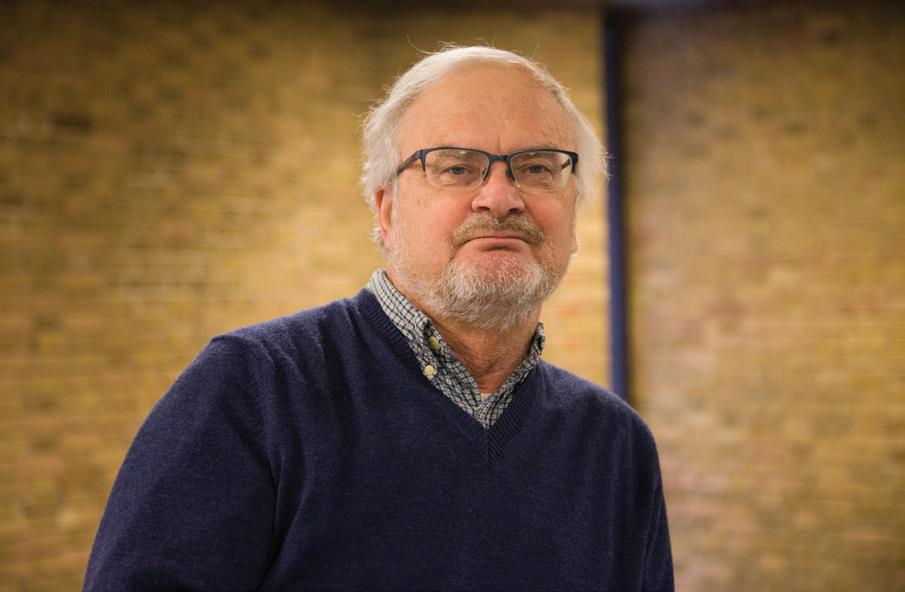
thriving sports and entertainment district. “The argument is that decline is uneven, and that what happens in those spaces is very much tied to the process of abandonment,” Murray says. “If you go to the seven square miles along Woodward Avenue, you'll find a vibrancy, but you don't have to go very far to see that that’s very limited.”
His research draws on Brightmoor, Delray, Mapleridge, Poletown, and Riverbend — neighborhoods challenged by vacancy, abandonment, foreclosures, and diminished municipal services. Murray says a “kind of triage” is occurring, with some areas willfully neglected so others can be prioritized. “The city administration has basically decided that there are places they're going to do nothing for,” he says. “They're going to talk about doing things, but in fact, nothing is going to happen.”
In Delray, for example, residents face some of the worst pollution in the country due to overindustrialization. When the city offered a buyout program, few people qualified because so few were longtime homeowners.
Most funds for Detroit’s struggling neighborhoods come through private philanthropy and foundations and are devoted to projects like artist collectives and urban farms, Murray says. But with limited schools, social services, or even traffic lights, it’s hard to imagine these small-scale projects sustaining neighborhoods long-term. “What is happening in Detroit is an experiment with a new kind of urbanism,” Murray says. “What happens when the state agencies that offered a balance between private investment and public services begin to wither and fall apart?”
Research for his book-length manuscript is based on ethnographic fieldwork, including interviews and reviews of public records and journalistic accounts, as well as “walking the streets.” One clear comparison for Murray is Johannesburg, South Africa, once the world’s premier site for gold mining. The city now features extreme wealth next to widespread hardship after mining’s decline. Gated communities offer exclusivity for some, while other areas lack consistent public utilities and services. “There are a lot of cities in the world that are experiencing something very similar to Detroit,” he says.
It’s not just a lack of resources, but speculative investors extracting what little remains. Murray says these investments leave few homes for purchase, with landlords charging high rents and offering “predatory” rent-to-own schemes. “It’s not the absence of a market: It’s the actual working of the market,” he says.
Murray hopes that this collective research project can raise awareness about deindustrializing cities in distress.
— Eric Gallippo
Visiting scholars share experiences at Taubman College and Auburn’s Rural Studio
TAUBMAN COLLEGE HOSTED two visiting scholars through the U-M African Presidential Scholars (UMAPS) program for 2024-2025. Clint Abrahams, architect and senior lecturer at the University of Cape Town, and Michael Gameli Dziwornu, geography researcher and lecturer at the University of Ghana, spent the year studying and sharing knowledge with faculty and students, including at events hosted by the college’s Africa Alliance.
In the spring, the scholars shared their work with the community. Dziwornu gave a talk on his extensive research into the social, spatial, and environmental history of an abandoned sugar factory in post-colonial Ghana. The factory and surrounding farm have changed international ownership several times and offer a complex case study to inform more equitable and sustainable developments in the future.
Abrahams hosted an intimate storytelling event in the college's TVLab, where faculty and students discussed architecture and narrative in marginalized communities, including his home of South Africa. Titled “Ghellie Blik Stories” the event was named for the Afrikaans word for a found metal object used to hold a fire for gathering. Gathered around a virtual fire and surrounded by drawings, videos, and texts, guests were invited to informally “talk about the work as if we were friends.” “The language we use around this particular object is important,” Abrahams says. “Back home, to get to the deeper meanings, you can't talk in a language that is not accessible.”
The scholars also took part in the “Land, Deed, and Debt” workshop exploring university campuses in West Africa. The day-long event featured several Taubman College faculty and was held in the commons. “The publicness of it was incredibly moving in the sense that, when we talk about African scholars and what they do, it's not done in isolation,” Abrahams says.

At the conclusion of their stay, the scholars traveled south to participate in the Society of Architectural Historians conference in Atlanta and visit Auburn University's Rural Studio, as well as several historic sites from the U.S. civil rights movement, with Professor Łukasz Stanek. The off-campus design-build studio focuses on social responsibility and sustainability in a historically low-income rural region of Alabama. Their visit was supported by a Taubman College microgrant. “My research looks at rural regeneration, so the experience was quite incredible — to see firsthand how a cultural studio has been able to revitalize a rural community,” Dziwornu says.
As they prepared to return home, Abrahams and Dziwornu both expressed gratitude for the experience and their hosts’ commitment to collaboration and sharing knowledge, as well as the opportunity to work with each other. “The cohort is incredibly important,” Abrahams says. “Since we come from the same place, meaning Africa, it feels like you can ask questions and speak openly as one would do as brothers and sisters.” — Eric Gallippo
MASTER OF ARCHITECTURE students Ravi Kumar and Cayla Ellis spent the summer in Kigali, Rwanda, with MASS Design Group as part of the college’s Longo International Architecture Internship program. Kumar, M.Arch ’26, worked on the firm’s Mothers and Children focus area, researching design solutions to reduce maternal and infant mortality and comparing different interventions in the region. Ellis, M.Arch ’26, worked on the Learning and Entrepreneurship focus area, comparing case studies to determine if higher education translated to leadership and entrepreneurship in the workplace.
The program was established, in part, through a gift that created an endowed fund at Taubman College and was later strengthened with a significant bequest to establish the Longo International Architecture Internship Fund in 2018.
During their internship, Kumar and Ellis benefited from practicing design abroad, visiting a variety of locations, and adapting to cultural differences. “To be able to utilize some of the coursework and skills we’ve gained in a completely new environment was really eye opening,” Kumar says. “There’s a much different scene around design and the built environment, particularly in East Africa. It was really enriching to experience that firsthand.”
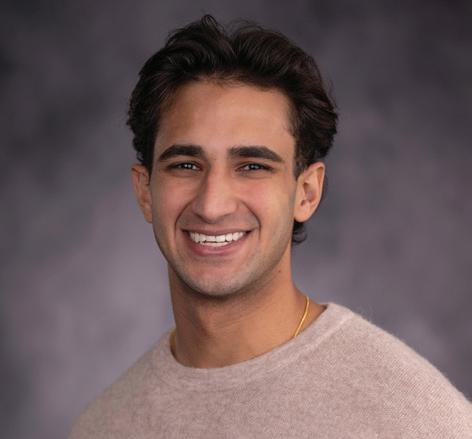
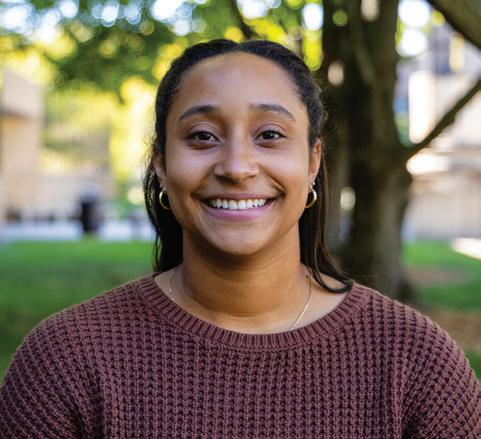
Outside of work, Ellis visited the Ellen DeGeneres Campus for the Dian Fossey Gorilla Fund, the Mubuga Primary School, and Nyungwe National Park. At the end of their trip, the interns visited Butaro District, home to Butaro District Hospital. The health care and university center provides essential resources for rural Rwandans. “It was really clear that this had become a place for patients to seek reliable care in a locality where that wasn’t an opportunity previously,” Kumar says. “To see the direct impact of design decisions — like certain structuring of the building, external circulation, or outdoor waiting areas — actively in use was enlightening.”
Although Kumar and Ellis worked on different projects, they both worked closely with community members in Kigali. In her spare time, Ellis also played co-ed soccer, a highlight of the trip that also helped introduce her to new people. “Teaching youth how to play further expanded my network and gave me the opportunity to interact with a diverse group of people,” Ellis says. “I made friends for a lifetime in the league, as they truly cared for me throughout my stay, which was a blessing.”
Based on their experiences in Rwanda, Kumar and Ellis both hope to continue engaging and working with community members and stakeholders closely during the design process after graduation. “Knowing that’s where the true impact lies will continue to impact the way I approach design pursuits, as well as the way I engage with localities I’m working with — the direct users of projects and stakeholders who are meaningful to the project, and who might also not have a voice in a typical design process,” Kumar says.
“This experience made me truly consider the needs of the people prior to designing the output and the importance of research throughout all aspects of the design process,” Ellis says. — Joshua Nicholson, B.S. Urban Tech ’26

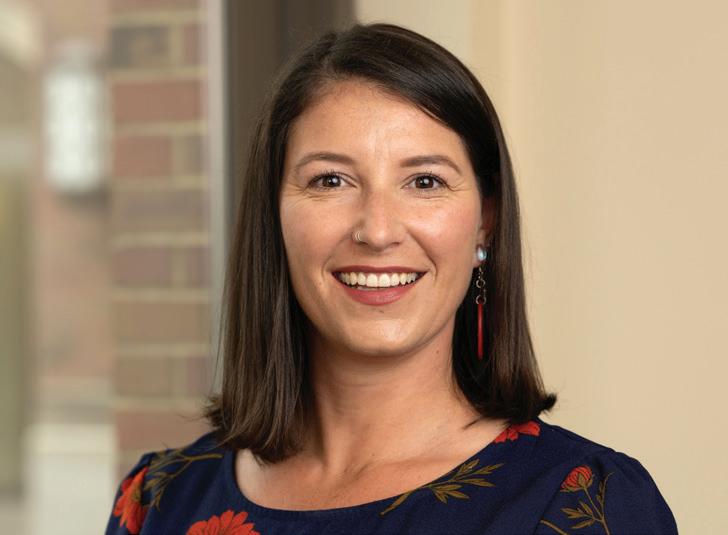
Rebecca Griswold M.U.R.P./M.P.P. ’26
A: The impact of short-term vacation rentals on community housing stock and character.
Why is this interesting to you?
As we face a housing shortage across the U.S., shortterm vacation rentals have saturated rural tourist areas and unique urban neighborhoods. These rentals have expanded lodging options and generated additional tax revenue. But they also reduce housing options and affordability for local workers while diminishing community charm, value, and services.
I grew up in a rural area near a national park that is facing the impacts of short-term rentals on housing for park employees. Single-family homes are being purchased as investment properties to rent out. As a result, the K-8 school population has declined from 300 students to about 75 in the past 10 years. This is not unique to my hometown. Many communities have banned shortterm rentals or capped the number allowed. I believe there are policies that could curb the negative impacts while still capturing revenue. By shifting to owner-occupied short-term rentals, owners could still rent spare rooms, garage lofts, and other additional dwelling units while fostering the culture and character that creates a thriving community.
Jordan Hunter M.U.R.P. ’26
A: The role of the arts in planning.
Why is this interesting to you?
Last summer, I interned for the Kresge Foundation’s Arts and Culture Program, where I began to see connections between the arts and urban planning and the pivotal role non-profit cultural organizations play in community development, preserving history, breaking down barriers, and bringing neighbors together. It’s not just non-profits. Across the country, planners and everyday people are weaving the arts into placemaking. In Washington, the D.C. Funk Parade offers art installations combined with oral histories of the city’s disco roller skating culture. In Boston’s Upham’s Corner neighborhood, vacant storefronts became stages for talk shows hosted by and for the community. In Richmond, California, little-used Pogo Park became a sustainable neighborhood hub.
We share a building with the Stamps School of Art and campus with the School of Music, Theatre & Dance, but people don’t think of planning’s ties to the arts. Professor antonio c. cuyler said in our Arts and Community Engagement class that the arts “give life meaning.” If our job is to improve life for people in cities, then giving their lives meaning through the arts should be part of that.
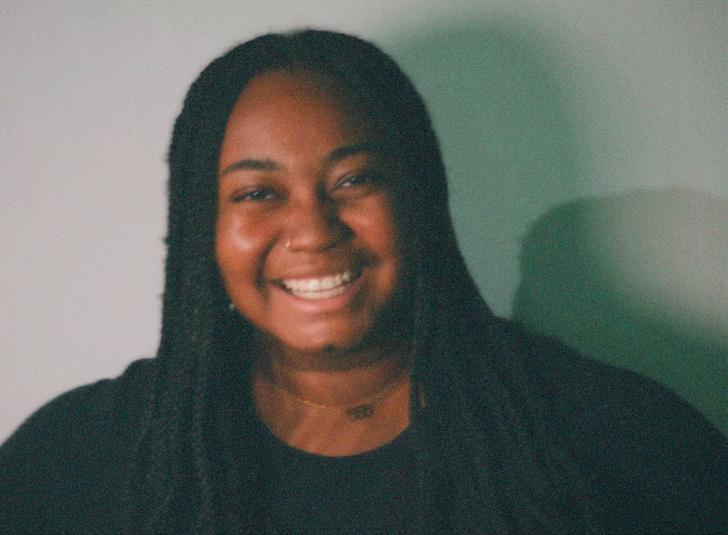

B.S.
Urban Tech ’26
A: Building science’s resurgence.
Why is this interesting to you?
Building science helps us understand and control how air, moisture, and heat move throughout a building to reduce energy consumption. Various efforts have been made to decarbonize American housing over the years, but none were transformative industry-wide. Today, the paradigm has shifted. With a focus on energy usage and carbon emissions, many U.S. cities have rolled out building performance standards and some universities have integrated building science into their programs, including Lars Junghans’ ARCH 505 class at Taubman College. The climate crisis is a core issue for our generation; sustainability is a necessity, not a luxury.

M.Arch ’26
A: Design in Detroit.
Why is this interesting to you?
I come from Shenyang, a former heavy industrial city in northern China. The challenges Detroit has faced over
the past decades resonate strongly with my hometown. This connection drives my commitment to studying how Detroit can adapt and thrive following urban contraction.
During the 2023 fall semester Form Studio, I learned about the United Auto Workers strike in Detroit and nationwide. I proposed the “Strike House” for my project — a community designed to support striking workers and raise awareness about labor actions. Last summer, I researched public transportation challenges in the city as part of the Global Citizen Young Artist Collective. Inspired by grassroots interventions, my project proposes a modular transit shelter that supports both mobility and community identity. Looking ahead, I want to deepen my study in design equity to contribute to a more inclusive and sustainable future for Detroit.

B.S. Arch ’26
A: Reinventing neglected infrastructure in the Anthropocene.
Why is this interesting to you?
Over the summer, I explored ways to repurpose neglected infrastructure in Cadillac, a small lakefront town in northern Michigan. Cadillac recently completed several public works. One critical piece that remains neglected is the city dock, which is deteriorating while surrounding development and increased tourism accelerate coastal erosion and contribute to lake pollution. I proposed a solution that reuses the existing structure while introducing natural cooling, recreational zones, increased lake access, multi-seasonal usability, and measures to protect and restore the shoreline. As young architects, we can define the future of infrastructure and environment renewal.

B.S. Arch ’00

B.S. Arch ’27
Lina Chiu, B.S. Arch ’00, principal at Lamar Johnson Collaborative in Chicago, and Elliot Nielander, B.S. Arch ’27, discuss seeing the tangible impact of their work, the difference in private and civic development, and the importance of forming connections along with skills as an architect
CHIU: I grew up in Ann Arbor and went to high school down the street. We have a lot of alumni in my family — my husband, brother, sister-in-law, and nephews all went to Michigan. I’m involved in the Alumni Council, so I’m back in Ann Arbor and at Taubman often. My firm, LJC, also has a lot of alums. We hire summer interns and new grads and host spring break externs from Taubman. Anyone who knows me, knows I’m a really obnoxious Michigan fan.
NIELANDER: I’m in my junior year this fall for architecture. I had an internship following my freshman year at Marusich Architecture, a smaller, multi-family geared architecture firm. I just wrapped up an internship at Quinn Evans in Ann Arbor this past summer.
CHIU: How was your internship?
NIELANDER: It was super exciting. It was in the Ann Arbor office, so I was able to work on the Ann Arbor
Public Schools projects. I got to go on site and get my hands dirty. You spend so much time on the computer in the office, and that’s where you build your technical skills in Revit or AutoCAD, but it’s a whole different experience when you actually see the project in person and the communities that you’re building for. It’s very inspiring.
CHIU: That’s incredible that you’re gaining such valuable professional experience as a student. Many people don’t get the opportunity to see the impact of their work right away. Projects often don’t get built because of budgetary and client restraints, but you’re working on something tangible, and that hands-on experience is invaluable.
NIELANDER: During my time at Marusich Architecture, I had the opportunity to work on a custom house project. When working with a client, I learned you’re not just designing to an ideal. There are so many other considerations based on their taste, and they have a lot of say, since it’s their money and their project. The ability to
push and pull is necessary to keep the client satisfied, while still maintaining the integrity of the original design.
CHIU: In school, you’re trained how to think creatively, solve problems, and develop your skills as a designer. Once you’re in the real world, those skills become tools. The client hires you to bring their vision to life, and you are there to guide them with your expertise. So much of our work and what we do is listening and making sure the clients feel heard and are happy. When you are able to build a strong relationship with them, it leads to more work.
NIELANDER: As outreach chair for the architecture fraternity, Alpha Rho Chi, I scheduled the recent Chicago firm visit, where we visited LJC. One project that stood out to me there was the Obama Presidential Center in Chicago. What are the differences between working with a public client or a civic project versus working with a private developer or a private client?
CHIU: With a private developer, there’s usually one or two clients. In contrast, this project involves a wide range of stakeholders, each with their own functions, missions, and priorities. That’s probably the biggest difference. A lot still depends on the specific project, but both types of work have common goals that involve client service, managing schedules and budgets, and creating a cohesive design aesthetic. On this particular project, I’m working as the owner’s representative, which adds another layer of responsibility and coordination.
NIELANDER: Do you enjoy being the client rep?
CHIU: Yes. The biggest learning curve has been navigating communication between all the different types of stakeholders. Acting as the person who connects everyone, working to build consensus and alignment, has been a really unique and valuable experience.
NIELANDER: Is there any role that you want to step into in the future?
CHIU: One thing I haven’t done in architecture is a really high end residential house, so I would love to eventually try it out.
NIELANDER: Do you have any specific style in mind?
CHIU: When I came out of school, I was all about all things modern. I’m finding my aesthetic evolves as I age.
When we started looking for a home in the suburbs, I wanted something modern looking with a flat roof. We ended up with a Tudor home and I’ve really leaned into it. It’s my project I keep picking away at. I really don’t have a certain look. What kind of work are you aspiring to do once you graduate?
NIELANDER: I want to be a residential home designer, designing more traditionally styled homes. I grew up in a 1920s small Tudor. I’m from Royal Oak, a suburb of Detroit. I’m super inspired by Albert Kahn, Eliel Saarinen, and all of the houses in Palmer Woods and Grosse Pointe. I had a great experience at Quinn Evans, because of their focus on bringing historical architecture back.
CHIU: You have the license right now, being in school, to try everything and continue to explore and ask questions as much as you can. Make connections outside of architecture, because all those relationships somehow are six degrees to another client or another project opportunity.
NIELANDER: What do you think is the most important thing you learned at Michigan?
CHIU: The importance of relationships and accountability to your peers. I immediately think of my friends from studio, as we are still connected through various channels. One even works at a competing firm, but we’re always trying to support each other. Another big takeaway is the rigor you learn in the studio. Learning to solve problems creatively while taking feedback and coming up with alternative solutions is such a critical part of professional life.
NIELANDER: I would definitely have to echo you. The relationships and mentorships I’ve had during my first two years have meant a lot to me, and they’ve guided me and pushed me in directions I didn’t expect. And not just my peers but also professors and colleagues who have made me think about buildings in a different way.
CHIU: You go in thinking, “I’m going to learn to be the best designer in the world,” but you come out with a much broader skill set. And honestly, the most valuable part is everything else that comes with the experience — the access you have to faculty, career resources, and opportunities outside the architecture school within the university. Go in with the mindset that this is like a big bowl of opportunity. Take advantage of everything you can and take it all in.


Skylar Emerson’s interest in cities and buildings started with watching HGTV and playing Minecraft as a curious kid in the Detroit suburb of Troy. “I would walk around my neighborhood and pick out houses and think, ‘Why design it that way?’” says Emerson, B.S. Urban Tech ’27.
As she got older, Emerson started noting differences between the rapidly growing suburbs and neighboring Detroit, which led to bigger questions. “I want to understand why things are being overdeveloped, and then why some things can’t be developed,” she says. “How can we help those underdeveloped areas, especially in Detroit.”
At Taubman College, Emerson is excited to learn more about affordable and sustainable building, especially reusing materials from existing housing stock, and making cities less car dependent. She’s found a place to bring that all together in the urban technology program. “I’ve always loved architecture and design and planning and looking at things and seeing how we can improve them,” she says. “I love the idea of changing people’s lives through design, even if it’s something small.”
This fall, Emerson is completing an online internship researching sustainability in cities with ModeScore ESG. She’s also working toward her real estate license to learn more about housing development. Last fall, she joined the real estate fraternity Rho Epsilon Iota, where she serves on the board for marketing and sponsorships.
Emerson is the recipient of the Claire L. Turcotte Scholarship Fund, founded by alumna Claire Turcotte, M.U.P. ’83, Ph.D. U.R.P. ’87. “Having that scholarship helps me a lot with not having to worry about money as much while focusing on my classes,” Emerson says.
Turcotte is local to Ann Arbor and meets at least once a year with Emerson. “She’s told me what she’s done and what she’s doing in urban planning, which is fascinating to hear,” Emerson says. “She has taught me a lot.”
If you are interested in supporting future leaders like Skylar at Taubman College, please contact taubmancollegeadvancement@umich.edu

ARCHITECTURE AND DESIGN FIRM PERKINS&WILL HAS ESTABLISHED a new scholarship at Taubman College honoring the life and legacy of Robin Guenther, FAIA, M.Arch ’78. The Robin Guenther Memorial Scholarship is a multi-year, need-based award that provides financial support to Master of Architecture students at the college. Guenther, who passed away in 2023, was one of the design profession’s foremost leaders in sustainable health care architecture, a lifelong advocate for equity and inclusion, and a proud Taubman alumna. One of her final wishes was to create a scholarship that would expand access to design education and uplift the next generation of talent.
Perkins&Will interviewed Tamar Ayalew, M.Arch ’26, the first Robin Guenther Memorial Scholar, about her journey into architecture, the values that inspire her, and her future aspirations.

The Robin Guenther Memorial Scholarship, established by Perkins&Will, honors Robin Guenther, FAIA, M.Arch ’78, above.
Where are you from?
I’m from Alexandria, Virginia. Growing up just outside of Washington, D.C., I was always surrounded by a rich urban environment, political history, and cultural diversity. That environment shaped how I view the built world and its potential to impact lives at both a personal and collective level.
What are you studying at Taubman College?
I’m currently pursuing my Master of Architecture on the two-year track at Taubman College.
What led you to architecture in the first place?
I was drawn to architecture because of its deep impact on communities. It’s not just about buildings, but
about shaping how people live, gather, and access opportunity.
I’ve always believed design has the power to support equity and connection, and architecture allows me to combine creative thinking with social responsibility.
Do you have a specific area of interest within architecture?
My main focus is at the intersection of affordable housing and community-led design. I’m also drawn to the ways health care and architecture overlap — how design can support wellness and dignity in health care settings, especially as both my parents work in the medical field and I’ve seen firsthand how space can impact healing.
Any early ideas of what you’d love to do after graduation?
After graduation, I hope to work at a firm that will support me in becoming a licensed architect and provide mentorship along the way. I’m eager to continue working on projects that center community, equity, and environmental resilience while applying all I’ve learned at Taubman to realworld practice.
What drew you to the Robin Guenther Memorial Scholarship? Robin’s work represents the best of what architecture can be: thoughtful,


people-centered, and committed to care. When I learned about the scholarship, I was immediately drawn to its values and the legacy it honors. Her emphasis on health, equity, and the environment reflects many of my own interests, and I felt aligned with the mission behind this opportunity.
Is there anything about Robin’s work or ethos that resonates with you personally?
Absolutely. Robin’s ethos of empathy and care through design deeply resonates with me. Her ability to combine technical expertise with a deep concern for human well-being is inspiring. The fact that she saw design as a tool for healing and advocacy is incredibly admirable. Her legacy reminds me that good architecture is not solely about aesthetics; it is also about people, systems, and justice. I hope to carry that ethos forward in my own career.
What does it mean to you, personally, to be selected as the very first recipient? It’s an incredible honor. To be recognized in Robin Guenther’s name feels both humbling and empowering.
It means so much that the firm saw in me the same values Robin embodied. Values such as compassion, thoughtfulness, and dedication to meaningful impact. I hope to follow in her footsteps by contributing to work that centers the human experience and improves lives. One of Robin Guenther’s signature projects was the expansion of the Lucile Packard Children’s Hospital Stanford in Palo Alto, California, which set a new global standard in children’s health care design and delivery.
Are there any school projects that you’re especially proud of?
One project I’m particularly proud of is a housing proposal my group and I worked on at Taubman. We designed a site in Ann Arbor to offer four distinct yet integrated housing typologies: a co-op, townhomes, duplexes, and single-family homes. Our goal was to create an equitable, intergenerational community that resists the rise of homogenous high-rent apartment developments. We wanted to prove that density, diversity, and affordability can coexist, and I’m proud of how our design embodied those values.
1. I’m left-handed, but most people don’t realize it until years after knowing me.
2. I’m a big film enthusiast with a growing collection of physical media.
3. I grew up playing tennis and still enjoy playing on a nice day to recharge and refocus.
4. I love to travel and experience new cities through the lens of architecture, food, and street life.
5. On the weekends, I love going to the flea market to find unique pieces, specifically the Georgetown Flea Market in D.C.
If you are interested in creating an endowed scholarship at Taubman College, please contact taubmancollegeadvancement@umich.edu
Robin and Gordon Carrier, B.S. Arch ’79, M.Arch ’81, pay it forward with $1M gift to Taubman College
AFTER 35 YEARS CO-LEADING one of San Diego’s top architecture firms, Gordon Carrier, B.S. Arch ’79, M.Arch ’81, still credits his success to tools he first picked up studying architecture at the University of Michigan, a school that felt out of reach to him as a high school student. Gordon grew up in a small town outside Flint, Michigan. He worked hard in school but still felt behind at graduation. “I always saw Michigan as a place I would aspire to, but likely never actually be able to go,” he says.
Things changed when he started building theater sets at Hope College, sparking his love for design and construction. He transferred to U-M to study architecture. There, he met his longtime mentor and “professional father” Gunnar Birkerts. The two stayed close and collaborated often after graduation. “He taught me what design is really about,” Gordon says. “I carry it with me to this day, and it was because of Michigan.”
That sense of gratitude has inspired Gordon and his wife, Robin, an interior designer running her own successful firm, to give to Taubman College and U-M over the years, including gifts to Michigan Solar House and the Rocky Mountain/Western States Scholarship Fund. In 2022, they founded the Gordon R. Carrier and Robin Wilson Carrier Scholarship Fund at Taubman College. This year, they strengthened that fund with a planned gift of $1 million, opening opportunities for students for years to come. “It’s such a worthy cause to give back and

invest in the future of design and provide for students in their education, because they’re our future,” Robin says.
Birkerts, who passed away in 2017, was an international architect who worked with Eero Saarinen. Taubman College’s commitment to recruiting top professors is another motivation for the Carriers’ giving. “Somebody needs to meet their own Gunnar,” Gordon says. “We’re hopeful this gift can help them afford that.”
The Carriers also appreciate recent efforts by the college to connect with alumni, led by Dean Jonathan Massey. Gordon has served on the Dean’s Advisory Board since 2019, and the couple have hosted gatherings in San Diego to build community amongst alumni there.
Gordon’s firm, Carrier Johnson + Culture, has also hired Taubman College interns and graduates. He’s impressed by the interdisciplinary opportunities uniquely available to architecture students at U-M today, as well as the critical thinking skills they leave with.“It’s about teaching people how to think,” he says. “Some do it well, some don’t. Michigan does it well.” — Eric Gallippo
If you are interested in making a gift through your will or estate, please contact taubmancollegeadvancement@umich.edu
A COLLABORATIVE RESEARCH PROJECT years in the making between Taubman College and a Michigan Tribal Nation to document the history of a Federal Indian Industrial Boarding School got underway this summer, thanks to the support of alumnus Kyle L. Schertzing, B.S. Arch ’05.
Led by Robert Adams, associate professor of architecture, and Dawn Gilpin, lecturer IV, and supported by Margaret Hillengas, post-graduate research assistant and director of the EIPC Scan-Lab, the multiyear, interdisciplinary effort with the Saginaw Chippewa Indian Tribe of Michigan will collect and share the history of the Mount Pleasant Indian Boarding School through LiDAR surveys, exhibition prototyping, and digitally immersive storytelling. But it almost didn’t happen, after a National Endowment for the Humanities grant was rescinded under the current federal administration. "This important project built a meaningful partnership between Taubman College and

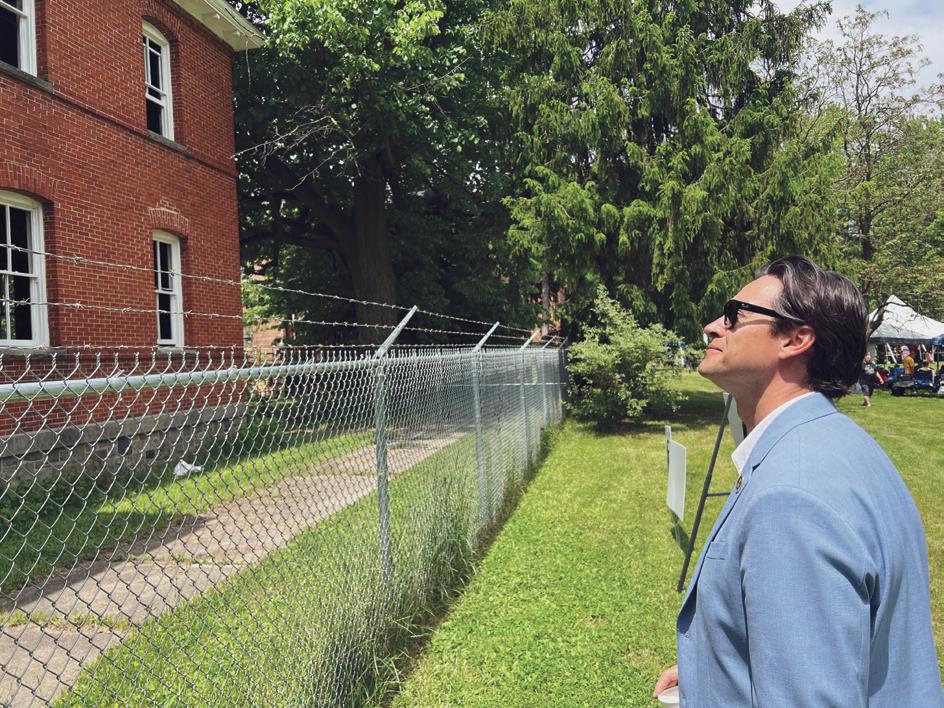
Tribal Sovereign Nations. It was a loss to have the NEH funding pulled,” says Kathy Velikov, associate dean for research. “Kyle's support allows this work to move forward with an expanded scope and purpose, and opens doors for research partnerships to make a real impact on the lives of Tribal citizens in our state through knowledge building and the recovery of cultural histories."
Born and raised in Chelsea, Michigan, Schertzing is a San Diego-based architect, member of the Taubman College Alumni Council, and a citizen of The Little Traverse Bay Bands of Odawa Indians. When the project lost its funding, he made a gift to keep it going and expand it to include the impact of all five of the state's Indian boarding schools on Tribal communities. The findings will be owned by all 12 Michigan tribes. “For me, it’s also about being a voice with Robert and Dawn and raising awareness of the actual history,” says Schertzing, who also serves on the project’s board. “To know that there was a culture within architecture that agreed to create these buildings for such horrific things is disgraceful.”
Between 1,000 and 3,000 children are estimated to have died attending Federal Indian boarding schools for forced assimilation across the U.S. in the 19th and early 20th centuries, including Mount Pleasant, where children from across the region were transported. “The impact of Kyle’s gift is two-fold,” Adams says. “It supports the Chippewa Indian Tribe of Michigan in telling their story about the history of the Mount Pleasant Indian Industrial Boarding School, and it launches a new research project that examines the impact of epistemicide and cultural erasure on all 12 Indigenous Tribes in Michigan.” — Eric Gallippo
If you are interested in supporting research efforts at Taubman College, please contact taubmancollegeadvancement@umich.edu
Through an endowed scholarship fund, Kevin Bush, M.U.P. ’10, hopes to help remove barriers for the next generation of planners
KEVIN BUSH, M.U.P. ’10, HAS SPENT his career at the forefront of disaster recovery and climate resilience strategy, leading emergency preparedness and recovery efforts for the city of Washington, D.C., and federal housing and development programs under the Biden administration. But if it weren’t for a few encouraging friends and a well-curated summer reading list, he might never have pursued the education that set him on that path.
In 2008, Bush, was living in Southeast Michigan, working in a role he didn’t love in a job market sunk by the recession. “Several people told me, ‘You like understanding how systems work and how thriving places come to be. Have you thought about urban planning?’” he recalls.

After sampling a few books listed on the Taubman College website, he met with the admissions team and was soon registered for the next term. Today, as a principal at The Cadmus Group, Bush puts his years of public experience to work in the private sector, managing large, multidisciplinary teams to help federal, state, and local governments navigate complex climate, resilience, equity, and infrastructure challenges.
Recently, he established the endowed Kevin Bush Urban Planning Scholarship Fund as a way to help the next generation of planners navigate financial challenges that might keep them from pursuing their own dreams of a Taubman College education.
While Bush enjoyed nearly all of his classes — particularly those on planning law with Dick Norton and planning theory with June Manning Thomas — as well as working with advisor Joe Grengs, he credits mentoring experiences outside of the classroom with shaping his career, including an internship with the Michigan State Housing Development Authority and a Chicago Mayoral Fellowship.
A summer AmeriCorps program in Detroit and a vacant property survey run by Eric Dueweke turned his attention to low-income community development. Another formative project with Professor Larissa Larsen exposed him to climate adaptive sustainable building measures.
“I’ve gone back and forth between community development and climate and where they interact is kind of my sweet spot, but those really came out of extracurricular programs I had exposure to through Taubman,” he says. “A lot of my early side projects, internships, fellowships, etc., were incredibly eye opening to me and really set me on the path that I’m on now.”
Right out of college, that path included working for the U.S. Department of Housing and Urban Development (HUD) as a Presidential Management Fellow, where he worked on President Obama’s Strong Cities, Strong Communities initiative and with the White House’s Council on Environmental Quality’s climate adaptation team. Hurricane Sandy hit New York a year into his fellowship, and climate change became a top priority for the administration, moving Bush’s team front and center. Joining the Hurricane Sandy Rebuilding Task Force, Bush found himself on the ground floor of a new approach to disaster recovery, as he helped launch and then expand major initiatives to not only rebuild in their aftermath but to do so with sustainability and climate resilience in mind.
When Washington, D.C., was selected in 2016 as one of 100 Resilient Cities, a worldwide initiative to help cities address 21st-century challenges led by the Rockefeller Foundation, Bush became its first chief resilience officer. A few years later, he became chief of resilience and emergency preparedness for the district’s Homeland Security and Emergency Management Agency. The COVID-19 pandemic hit two months later, and there was Bush again, thinking on his feet to help navigate federal funds to not only cover emergency expenses but also plan for D.C.’s future after losses to sales tax and tourism revenues.
Under the Biden Administration, Bush returned to HUD as deputy assistant secretary for grant programs, where he oversaw a nationwide portfolio of affordable housing and community development programs, including the largest source of disaster recovery and climate resilience funding for low-income communities and the launch of a high priority $5 billion housing recovery program. “What I have found most valuable from my time at Taubman is that, as a planner, you’re basically a cities and government generalist,” Bush says. “You learn about a lot of the different systems that go into making communities better.
You’re not an engineer or an architect or a fiscal analyst, but you know a little bit about each of those things, and that experience has really helped me launch very large, very new, very complicated programs over and over again.”
Today, Bush and his family live outside of Philadelphia, where in addition to his remote work for Cadmus, he also serves on the planning commission of a 40,000-person exurban township. He’s a proud Wolverine who keeps a block M throw pillow in his office and fondly recalls crossing paths with alumni “in the strangest places,” from meeting with Julie Schneider, M.U.P. ’12, director of Detroit’s housing & revitalization department, about HUD grants, to Jonathan Tarr, M.U.P. ’11, helping him move into his first place in Washington.
— KEVIN BUSH, M.U.P. ’10 “
My hope with creating this fund is to help unlock some of the potential from students who bring their lived experience, creativity, and deep sense of purpose to the field of urban planning.”
Over the years, he has also made time to advise and advocate for Taubman College students. Bush is a regular speaker at career events focused on public service and, last fall, joined a panel on climate resilient communities as part of the college’s Climate Futures Symposium. When it comes to founding his own scholarship, Bush says the world will always need planners, but oftentimes talent and vision can be constrained by financial barriers.
“The future of resilient, sustainable, and just communities really depends on who gets to shape them,” Bush says. “My hope with creating this fund is to help unlock some of the potential from students who bring their lived experience, creativity, and deep sense of purpose to the field of urban planning.” — Eric Gallippo
If you are interested in creating an endowed scholarship at Taubman College, please contact taubmancollegeadvancement@umich.edu
THE LAST COUPLE OF YEARS have been eventful for Kimberly Montague, FAIA, B.S. Arch ’87, M.Arch ’89. After being named president of Detroit’s Albert Kahn Associates in 2023 and then CEO In 2024 — making her the first woman to hold either position in the firm’s 130 year history — she was elevated to the American Institute of Architects’ College of Fellows in early 2025.
This has also brought her full-circle, as she reunited with the firm where she started out of college. In the years in between, she worked across her home state of Michigan and around the world, researching, designing, and consulting on innovative health care and workplace spaces and strategies. “There is this connective tissue between architecture, design, and planning that I have found is my sweet spot,” she says.
But where she finds the greatest joy lately is in giving back to her community, whether it’s volunteering, serving on nonprofit boards, mentoring young architects, or helping to raise awareness about architecture and women’s health. “It kind of makes everything real, and it reminds me we’re all connected in some way,” she says.
This fall, she established the Kimberly and W. Clifton Montague Scholarship at Taubman College as a way to support future architects and also show gratitude for the foundational education she received at the college.
Montague grew up near Ann Arbor in Plymouth, Michigan, and came to U-M to be a doctor, until she had a run-in with organic chemistry. “I quickly found out organic chemistry is the pre-med weeder class,” she says. “I remember
sitting in the back of the auditorium thinking, ‘This might as well be another language, because I don’t get any of it.’”
After reviewing her transcripts, a guidance counselor suggested an introductory architecture class. It was the exact opposite experience. “No one had ever talked to me about what an architect does or what design was about. I didn’t realize it had so much to do with cultural anthropology and the other humanities,” she says. “I was hooked.”
After graduation, Montague worked for several years at Detroit’s historic Albert Kahn Associates, where her interest in medicine was put to good use working on health care projects. “It had that connection between health, wellness, design, architecture, planning, and culture that seemed to really fit with me,” she says.
When a client shared some new work they were doing on patient-centered care and the role spaces play in how care is delivered, Montague was intrigued. The client was part of an international not-for-profit organization, which would soon be looking for someone who could speak the language of architecture to lead its design consultation efforts. It was a perfect fit for Montague, who spent six years as Planetree’s director of design consultation, traveling the U.S. as well as Brazil, Japan, and the Netherlands, and working with the Veterans Administration, listening to stories from patients, nurses, and doctors about the importance of spaces in their work. “That was a turning point in my career for understanding the impact of design on whatever it is our clients do, whether they’re an insurance provider or a hospital or a manufacturer. That’s where I really saw the impact of the environment come to life,” she says. “It changed the trajectory of my career.”
Building on that experience, Montague next joined West Michigan furniture maker Herman Miller’s research and insights group, where she explored how spatial arrangements impact health care and workplace environments on a micro level. After stints with another firm and furniture maker, she made her way back to Albert Kahn, which was looking to ramp up its efforts in health care design, first becoming president and then also CEO a year later.
At Kahn, she’s been focused on harnessing new technology, from drones to AI, to deliver cutting-edge solutions for clients. She’s also deeply committed to mentoring and developing talent, especially the “missing middle” between those just getting started and those longestablished in their careers. “One of my top priorities

is not only attracting and retaining great talent but also offering them training and professional development,” she says. “Preparing that next generation has always been front and center for me.”
As the firm celebrates its 130th anniversary, Montague says its legacy is evident when looking out the window of nearly any building in downtown Detroit, from the automotive industry to civic structures to hospitals and office buildings. She can’t say much about what’s on the horizon, but she’s excited to carry on its tradition of innovation. “We have some incredible projects that will start to tie that ingenuity together with legacy and history in creative ways,” she says. “It’s a great time to be in Detroit and a great time to be part of the fabric of this city.”
Montague is also leading when it comes to giving back. In addition to her new scholarship at Taubman College, she has given guest lectures in Professor Linda Groat’s seminar class about working adjacent to the industry and, now that she’s back in it, as a woman in architecture. She’s also taken time to mentor students and to review portfolios and interview potential fellows for an endowed fellowship program at Albert Kahn Associates.
“The opportunity to learn from and work alongside so many great people at the college gave me the foundation to excel as an architect,” Montague says. “I was fortunate to receive several scholarships that helped me get through school, and that support made a lasting impact. As part
of my commitment to advancing architectural education, I want to share my experiences and give back. Supporting future generations — especially those who may be navigating similar challenges — is one of the most meaningful ways I can show my gratitude.”
Montague recently got involved with the American Heart Association and is chair of its 2025 and 2026 Detroit Go Red for Women campaigns. Elsewhere in the city, she has worked with the Detroit Regional Chamber, Life Remodeled, and Women in Healthcare. She also currently serves on the Michigan Architectural Foundation Board of Trustees, raising awareness and funds to support architecture and students across the state.
In February, the AIA named her to its prestigious College of Fellows, a designation received by less than 3% of architects. Being recognized in a room full of peers — many of whom she has admired for years — was a humbling experience for Montague. “As an industry, we are doing some pretty amazing things in a variety of ways, so it was an incredible honor,” she says. “It makes you realize the impact that architecture has on human life. It’s where we work, play, live, heal, learn and everything in between. So yeah, it was phenomenal.” — Eric Gallippo
If you are interested in creating an endowed scholarship at Taubman College, please contact taubmancollegeadvancement@umich.edu
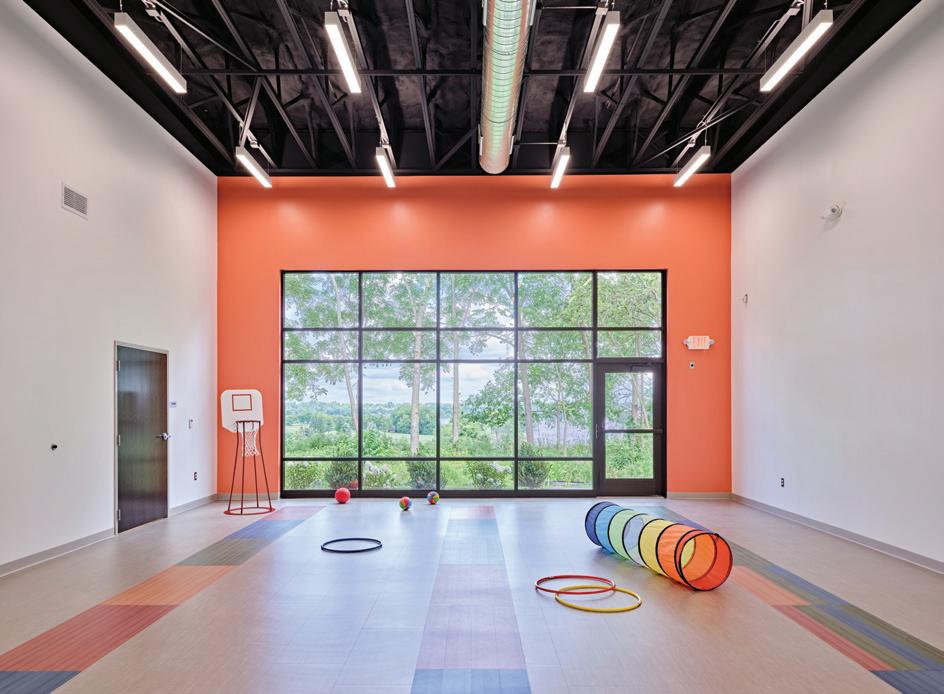

Motivated by her own cancer journey, Amanda Barbour, B.S. Arch ’09, used her studio lessons to launch centers for immunocompromised children and their families
AMANDA BARBOUR’S LIFE TOOK an unexpected turn soon after graduating from Taubman College, when she was diagnosed with cancer at age 22. Today, as founder and CEO of the Children’s Healing Center, she credits her education with helping her develop the skills, determination, and design thinking needed to launch first-of-theirkind gathering spaces for immunocompromised children and young adults.
After spending the summer following graduation working for former dean Mónica Ponce de León, Barbour, B.S. Arch ’09, moved home to Grand Rapids, Michigan, to work for AMDG Architects. Frequently sick, she underwent extensive testing that revealed stage four Hodgkin’s Lymphoma, a type of blood cancer typically found in young adults and seniors.“By the time they found it, it had spread throughout my body,” Barbour says.
As a younger adult, she was assigned to a pediatric care team at the children’s hospital in Grand Rapids, and treated with the expectation she would live a long life. There, she met many kids and young adults who,
like herself, felt isolated by the experience. “We all understand it now post-COVID, but in 2010, not a lot of people knew what it felt like to be told you couldn’t go into public places or the movies or the mall or to hang out and do normal young adult things,” she says.
She remembers lying in her hospital bed thinking, “How can I use this to shape and inform and help people and places? Wouldn’t it be really cool if we could create a safe and clean space where the kids, young adults, and families I was meeting could interact and play and be normal and form friendships?”
She continued to work throughout treatment as a way to maintain some normalcy and her identity as an architect, but in the background, a different dream was forming — one that applied her knowledge and skills in a new way.
Above: The Children’s Healing Center’s Southeast Michigan location, which was designed and built by The McFate Group, with Jon Stevens, M.Arch ’04, as architect.
“A lot of the reason that I came up with the Children’s Healing Center and brought it to fruition is because of the education I received at Taubman College,” Barbour says. “I learned to always be looking for how I could improve environments and spaces. I deeply believe that buildings and environments and how they’re designed have the power to impact and influence people’s lives.”
After a year of treatment and another year of healing, Barbour started a nonprofit organization in 2011 to explore the idea and eventually opened her first center in Grand Rapids in 2015. Many of her first backers were recent architecture clients.
“I often share that I learned at Taubman College the ability to tell a story and pitch my design idea and concept,” she says. “In the studio, you come up with your project and then you present it to critics and they help improve the idea. That’s basically what I did for five years to get the center open — pitched the center to funders and community supporters and leaders and program experts and asked for their ideas. It was like a largerscale studio project.”
Designed as hospital-grade facilities with HEPA air filtration, water filtration, and no fabric surfaces, the centers also use intensive screening processes and a staff cleaning protocol that allows kids with complex medical conditions and weakened immune systems to participate in a variety of social and mental health focused programming, including after school activities, recreational therapy, fitness, art, and music. The center also partners with local organizations to bring in programs kids wouldn’t be able to participate in otherwise. But it’s the space itself that really makes the difference for kids and their parents.
“Their families and friends don’t understand what they’re going through, but when they come to the center, they can be in a space where they can exhale,” Barbour says. “They’re not worried that their kids are going to get sick or hurt, and they can connect really meaningfully with people who understand.”
Once the first center opened, Barbour realized it could help more than cancer patients, and expansion was soon underway. Then a physician at U-M’s Mott Children’s Hospital contacted her about opening a second center in the Ann Arbor area. With funding from the state and some key donors, the center opened an Ypsilanti location in June 2024 and is currently working with partner organizations to spread the word.
Ask an Alum
To help manage her growing organization, Barbour enlisted Taubman College classmate and longtime friend Sarah Velliky, B.S. Arch ’09, M.Arch ’11, who made the leap from project architect at OX Studio to manager of
design & construction at the center in 2022. Velliky already was familiar with Barbour’s mission, having volunteered in Grand Rapids before serving on the board of the Southeast Michigan location. With expansion and construction completed in Grand Rapids and Ypsilanti, she oversees mechanical systems and volunteers at both locations and will lead any future construction projects. Sometimes she misses design work, but the center has plenty of rewards.
“Seeing these kids and hearing their parents tell us, ‘This kid was having a bad day, and then we told them we were going to go to the Children’s Healing Center and their faces lit up and they just got so excited.’ That makes it worth it,” she says.

Barbour has always been something of a trailblazer: Before she was officially an architecture student at Taubman College, she and another classmate convinced the dean to let them join a studio class as sophomores.
“I liked being in the second-floor studio space,” she says. “The energy of the studios and students designing and learning and creating has always been really memorable and inspiring for me.”
After a decade of serving children and families, she’s still using that energy today.
“Taubman College empowers students to come up with unique ideas, and then gives us the tools and resources to create something essentially from nothing, which is really what the Children’s Healing Center is,” Barbour says. “A Taubman education gives you that confidence. If you have an idea, test it out. Keep testing, iterating, designing, reworking, learning from others, improving, and then executing. It’s the one thing I learned that helped the centers open and be in the growth phase we are today.” — Eric Gallippo

Andrés Cortés, B.S. Arch ’97, combines a love of buildings and entrepreneurial spirit to co-lead New York architecture and engineering firm
EVEN AS AN UNDERGRADUATE , Andrés Cortés, B.S. Arch ’97, had a “little bit of an entrepreneurial streak.” Cortés was working his way through college as manager of an Ann Arbor coffee shop when the owners approached him with his first side gig: designing a new addition next to the former home of Ulrich’s Bookstore. “Shockingly, they built it as I had designed it,” he says.
Later, during his graduate studies at Columbia University, Cortés continued to pursue freelance work en route to earning his master’s, becoming a licensed architect, and co-founding his own New York-based firm, Agencie, with his wife in 2007.
“We are an architecture and engineering practice that believes construction is the consummate architectural act,” Cortés says. “We try to optimize all of the work around constructability and construction methodology and materials, so that a work of architecture can also be thought of as a work of engineering.”
Today, that ethos and entrepreneurial drive, along with a spark for architecture he picked up at Taubman College, have served him well. The award-winning New York firm’s
portfolio includes hundreds of projects across residential, retail, entertainment, and sports sectors, as well as a successful spinoff business, supplying proprietary specialty scaffolding across the United States and Canada.
PSYCHED ABOUT BUILDINGS’
Growing up in Colombia and South Florida as the son of real estate developers, Cortés was well acquainted with construction sites from a young age, but he didn’t develop a passion for buildings until later. At the University of Michigan, his first interests were art history and English before making the leap to architecture. “Once you become an architecture student, you’re head over heels in love,” he says. “You’re just so psyched about buildings.”
He fondly remembers studying construction technology with Annette Lecuyer, architecture history with Lydia Soo, and drawing with Melissa Harris. He was also challenged by Jason Young, who brought a background in engineering that “filled another part of your brain.
Before launching Agencie, Cortés worked briefly for a couple of other New York firms, including B Five Studio, a smaller office renowned for its talented designers and work with high profile clients, including musician Billy Joel. There, Cortés got the opportunity to work with two principals on the interior of comedian and actor Jerry Seinfeld’s home.
“The Seinfeld experience was informative in how far into design work you can get, and it was a nice little feather in my hat at the time,” he says.
As principal architect at Agencie, Cortés wears many hats today, from design to client relations to financial oversight to human resources. Some days he takes out the trash. He’s still highly involved in the creative process, but sometimes that looks more like strategically building talented teams and pushing them to do their best work than putting pencil to paper.
Notable projects by the 20-person team include updating Times Square’s Hotel Langwell, renovating the historic Brooklyn Army Terminal to become the new headquarters of Uncommon Goods, and contributing sheltering canopies for the new terminal at JFK International Airport. Soon after launching, the firm developed its hallmark project, hitting on a novel approach to scaffolding that solved for functionality and aesthetics.
“There’s scaffolding all over the city to protect pedestrians, as these buildings are aging and the city is densifying, and also as the city is becoming more vertical,” Cortés explains. “So how do we protect the public right of way without obstructing the experience of the city?”

After winning the urbanSHED international design competition in 2009 with their Urban Umbrella scaffolding, Cortés and his wife created a separate business to supply it to cities around the U.S. and Canada before selling it in 2019. “It speaks to the heart of our approach, because it’s both a work of architecture and a work of engineering, and it’s a public facing project,” he says.
‘
Although he’s 500 miles from Ann Arbor, Cortés’ core group of friends in New York are friends he made at Michigan, and it’s not uncommon to cross paths with other alumni, or even work on a project together. He and his family get back to Ann Arbor fairly regularly, too.
Cortés’ pragmatic approach to design has sometimes kept him from appreciating his own creativity, but he’s coming around to it. “It took me years into my career where I was like, ‘Wait a minute; I’m a creative design professional, and this is how I make a living,’” he says.
Ultimately, though, it’s still mostly about seeing that creativity come to life in the real world as a finished product.
“We’re doers,” he says. “At the end of the day, I think most architects like to see things get done.”
To that end, even a building he doesn’t like looking at can be a point of pride. For example, that first commission, at 1101 S. University Ave., which has since been home to an Espresso Royale and now M36 Coffee Roasters. Although he doesn’t care much for the design today, it’s nice to see his mark on campus when he visits. “It’s the ugliest building I’ve ever done, but I’m very proud that it’s still there,” he says. — Eric Gallippo

Including Taubman College in your estate or financial plans is one of the easiest ways to make a lasting impact. You can even generate income for yourself and your family while benefiting the college and generations of students. Types of planned gifts include gifts from a will or trust, beneficiary designations, and property.
Making a planned gift is a rewarding way to support your alma mater. Contact the Taubman College advancement team at taubmancollegeadvancement@umich.edu or 734.764.4720 to learn more about establishing a planned gift for Taubman College or to let us know if you already have included the college in your will or estate plans.
Bequest Transfer property (including cash or securities) through a will or trust. A bequest can be a specific dollar amount or a designated percentage of your estate.
Beneficiary of Retirement Account(s)/ Life Insurance Policy
Charitable Gift Annuity (CGA)
Name Taubman College as a beneficiary of your retirement account(s) or life insurance policy.
• Legacy
• Simple and flexible
• Legacy
• Simple and flexible
• Tax savings
A life income gift that benefits you and Taubman College. Based on your age at the time of the gift, the American Council on Gift Annuities (ACGA) sets a fixed percentage rate of return. The university then invests your gift and makes fixed payments to you. Upon the passing of income beneficiaries, the balance comes to Taubman College.
• Legacy
• Tax savings
• Lifetime income to donor
• Fixed payments
• Irrevocable
SHARE YOUR NEWS with your fellow alumni in a future issue of Portico. Send your class note (along with a high-resolution photo, if you would like) to taubmancollegeportico@umich.edu or complete the online form at taubmancollege.umich.edu/alumni.
Mark Bulmash, B.S. Arch ’82, started a new position as senior consultant with KMC Consulting at KMC Controls.
Jeffrey Luker, B.S. Arch ’84, M.Arch ’86, has retired from Quinn Evans after 40 years. During his four decades with the firm, he worked on everything from diplomatic missions and historic government buildings to learning
facilities ranging from pre-K-12 to higher education. Luker was one of the firm’s first employees, starting as an intern in Ann Arbor. In 1987, he relocated to Washington, D.C., where he built a lasting career and played a pivotal role in transformative civic and institutional projects, including the renewal of the U.S. Treasury Building. Luker was promoted to a principal of the firm in 2001 and elected to Quinn Evans’ Board of Directors in 2009, serving through 2021.

Kemba Braynon, B.S. Arch ’95, M.Arch ’97, was promoted to senior associate architect at Quinn Evans.
Alexander Briseno, B.S. Arch ’96, M.Arch ’01, was named partner and studio practice leader in HKS Atlanta’s mixed-use studio.
Christine Dumich, B.S. Arch ’99, joined Stantec as principal leading the Workplace group.
Amy Graves, B.S. Arch. ’91, M.Arch. ’93, joined building ONE consulting as a project manager in their Syndicator group.
Michael Guthrie, FAIA, M.Arch ’98, founding partner of INFORM Studio, was awarded the 2025 AIA Detroit Gold Medal Award.
Ron Henry, M.Arch ’91, joined University of Michigan Health as executive director for facilities planning and operations.
Karin Morris, M.U.P. ’99, was named the 2025 Outstanding Practitioner Site Visitor from the Planning Accreditation Board.
Derrick Mroz, B.S. Arch ’97, joined K5 Company as principal architect.
Gretchen Wilkins, M.Arch ’99, joined Lawrence Technological University as chair of its Department of Architecture.
Kendal Bowman, B.S. Arch. ’07, M.Arch ’09, was selected as part of the 2025 Oakland 40 Under 40 Class.
James McMurray, M.U.R.P. ’08, joined Matrix Design Group, Inc., as federal planning practice lead.
Tom Rudary, B.S. Arch ’03, was promoted to principal at DLR Group in Washington, D.C.
Kathryn Slattery, M.Arch ’03, principal at Quinn Evans and studio director for the Washington, D.C. region, was featured by AIA Northern Virginia Women in Architecture.
Melisa Tintocalis, M.U.R.P. ’04, was awarded the American

Planning Association’s Douglas Hunter Award for Excellence in Economic Development for 2025.
Kelly Weger, B.S. Arch ’02, head of sustainability for North America at Qcells, published her second book, How to Kill the Planet in 8 Easy Steps! A Humorous Guide by a Satirical Snarkitecht
Angela Wyrembelski, B.S. Arch ’07, was promoted to associate principal architect at Quinn Evans.
Pierre Batton, M.U.R.P. ’16 started a new position as director of community engagement at DTE Energy.
Chris Bennett M.Arch ’13, started a new position as design director at Studio Gang.
Daniel Clunis, B.S. Arch. ’14, M.Arch ’18, started a new role as Senior Project Architect with INFORM.
Haley Command, B.S. Arch ’17, M.Arch ’24, was hired as project leader at INFORM studio.
Leah Gerber, M.U.R.P. ’17, started a new role as a strategic planner with the City of Detroit.
Ryan Giles, B.S. Arch ’10, M.Arch ’12, joined Northwestern Medicine as project manager for planning and construction.
Alexis Gomez, M.U.P. ’17, joined the City of Detroit’s Complete Streets as planner IV.
Cole Grisham, M.U.P. ’14, joined DOWL as lead transportation planner.
Gina Kim, B.S. Arch ’16, M.Arch ’19, started a new position as architectural designer at Studio Libeskind.
Justin Kollar, B.S. Arch ’12, was awarded the Gill-Chin Lim Best Dissertation Award from the Association of Collegiate Schools of Planning (ACSP) for his M.I.T. dissertation, “Silicon Frontier: Techno-Statecraft and the Geopolitical Ecology of Digital Capitalism.”
Vaishnavi More, M.Arch ’18, started a new position as co-founder and CEO at Studio Zenoya.
Daniel Nguyen, M.Arch ’18, started a new position as design engineer at Delphi.
Katherine O’Malley, M.Arch ’10, joined HDR’s Boston office as civic sector lead.
Ryan Ornberg, M.Arch ’13, and his team at Krueck Sexton Partners was awarded a 2025 AIA National Justice Facilities Review Award (Unbuilt) for renovation of the Silvio J. Mollo Federal Building in New York. The project was designed to be the most sustainable GSA building in Region 2, targeting LEED Platinum and Zero Carbon Certification.
Keith Peiffer, M.Arch ’12, was granted tenure and promoted to associate professor at Oklahoma State University.
Stephanie Pilat, Ph.D. Arch ’10, was named dean of the College of Design, Architecture, Art, and Planning at the University of Cincinnati. Pilat joins the college after leading the Division of Architecture at the University

of Oklahoma from 2016 to 2024, where she oversaw significant growth, doubling student enrollment and faculty size.
Salam Rida, M.Arch ’17, joined the 2025 Michigan Central x Newlab Creative Residency as its Inaugural Curatorial Fellow.
Mitchell Roessing, B.S. Arch ’15, was promoted to vice president at JLL.
India Solomon, M.U.R.P. ’19, and her company, CityShares, partnered last summer with a team of consultants to share their 18-month research effort examining real-time barriers to equitable real estate development in Detroit.

With support from the Ford Foundation, they chronicled challenges and solutions from more than 80 stakeholders. Since then, they’ve presented across a range of forums, including The Federal Reserve Bank of Chicago and the Authentically Detroit podcast, as this work continues to shape dialogue and policy change around expanding direct resources for equitable projects.
Charley Starr, M.Arch ’10, was promoted to senior associate and project manager at OZ Architecture.
Jesse Wetzel, M.Arch ’12, was promoted to associate principal at ZGF Architects, relocating to the firm’s Los Angeles office.
Alex Abramowitz, M.U.R.P. ’20, started a new position as director of transportation at University Circle Inc.
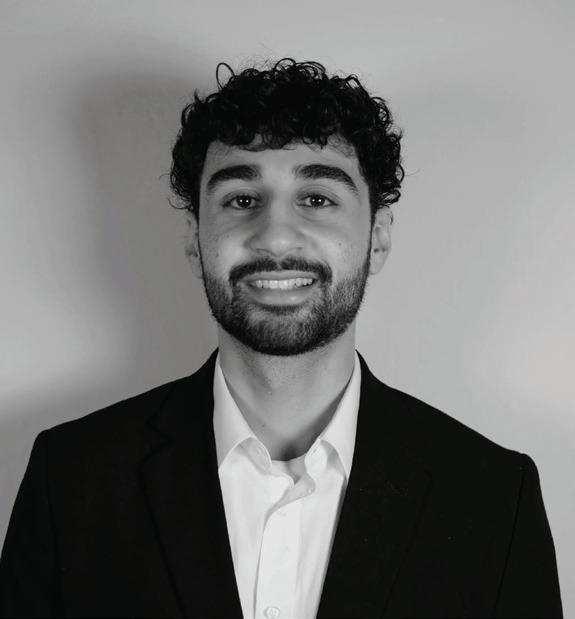
Abraham Alzoubi, M.Arch ’25, was selected as a 2025-2026 fellow with Challenge Detroit, a cohort of emerging leaders dedicated to community-driven work.
Madeeha Ayub, M.U.D. ’21, was selected to serve on the Caltrain
Citizens Advisory Committee (CAC) for San Mateo County.
Areli B., M.U.R.P. ’22, joined the Berkeley Transportation Division.
Erica Behm, B.S. Arch ’22, graduated from Clemson University with a master’s in architecture and joined BB+M Architecture.
Sanya Bery, M.U.R.P. ’24, joined The Community Preservation Corporation as a research and policy associate.
Julia Bohlen, M.Arch ’25, joined LBBA Architects as an architectural designer.
Catherine Carlberg, M.U.R.P. ’23, started a new position as planner at the City of Kirkland, Washington.
Valeria de Jongh, M.Arch ’20, was promoted to senior designer at ROSSETTI.
Jessica Duschean, M.Arch ’22, was hired as designer at Skidmore, Owings, and Merrill.
Emre Guven, M.Arch ’21, was promoted to associate architect at Populous.
Amir Lahouti, M.Arch ’25, joined HPI Architecture’s Newport Beach office as an Emerging Professional.
John Li, M.Arch ’23, was hired as architectural designer at INFORM studio.
Samuel Limerick, M.U.R.P. ’23, was promoted to principal data scientist at Metropolitan Council of the Twin Cities.
Amelia Linde, M.Arch/M.U.D. ’20, was hired as architect II, associate, at Lawrence Group.
Megan Ortinau, M.Arch ’25, joined Legat Architects as an architecture associate.
Maria Garcia Reyna, B.S. Arch ’21, M.U.P. ’23, started a new position as associate planner at McKenna.
Naomi Grigoryan, M.Arch ’23, started a new position as senior project representative at Hoffmann Architects + Engineers.
Ally Rees, M.U.D. ’23, joined Gensler Boston as a technical designer.
Srinjayee Saha, M.Arch ’25, started a new position as design professional - I at HKS, Inc.
Lawson Schultz, M.U.R.P. ’25, joined Friends of the Wissahickon as capital projects coordinator.
Areej Shahin, B.S. Arch ’21, M.Arch ’23, started a new role as design professional at HKS, Inc.
Ying Wang, M.Arch ’25, joined CO Architects in Los Angeles.
Jinren Yuan, M.U.R.P. ’25, started a new position as regional planner II: transportation at Roanoke Valley - Alleghany Regional Commission.
Xiaoyan Z., M.Arch ’25, started a new position as project specialist I at Corgan.
Estella Zhang, M.U.R.P. ’25, joined Enterprise Singapore as a management associate.
Juliette Zidek, M.S.D.M.T. ’22, Ph.D., joined HKS LINE as computational designer.
Robert H. Weatherill, B.Arch ’53 August 6, 2025
William S. Hobbs, B.Arch ’59 May 19, 2025
Naomi W. Harrison, B.Arch ’60 August 1, 2025
Larry Stark, B.S.Des ’65 April 21, 2024
Robert G. Pigati, B.Arch ’67 June 5, 2025
Robert E. Wedge, B.Arch ’70 August 13, 2025
Theodore G. Baldyga, M.U.P. ’73 May 14, 2025
Harold D. Kane, B.S. ’74 June 21, 2025
Robert B. Weaver, B.S. ’91 August 6, 2025
Gerald A. Kreiner, B.S. Arch ’10 September 23, 2025
Taubman College alumni gather regularly in Ann Arbor, across the U.S., and around the world. For updates on events near you, submit your contact information at taubmancollege.umich.edu/alumni or call 734-764-4720.


In October, the college hosted homecoming festivities, including a tailgate and a milestone reunion for the Classes of ’75, ’00, and ’15, where celebrated alumni award winners Josh Sirefman, M.U.P. ’03 (top right photo, with Dean Jonathan Massey), and Christopher Locke, M.Arch ’16 (beneath, right), were also recognized.
In May, Dean Jonathan Massey and Assistant Dean for Advancement Cynthia Radecki, A.B./B.S. Arch ’87, M.Arch ’88 joined Taubman College alumni in Hong Kong for the Pan-Asia Alumni Reunion.

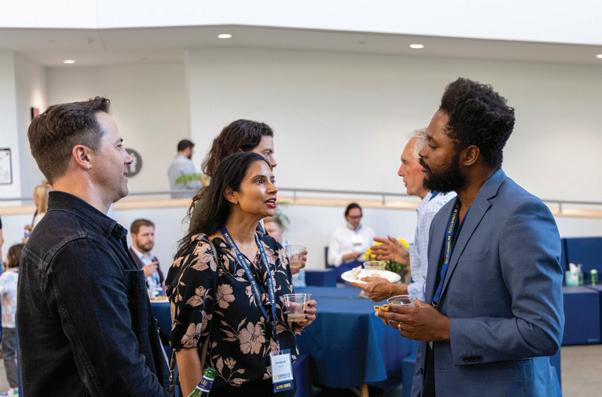

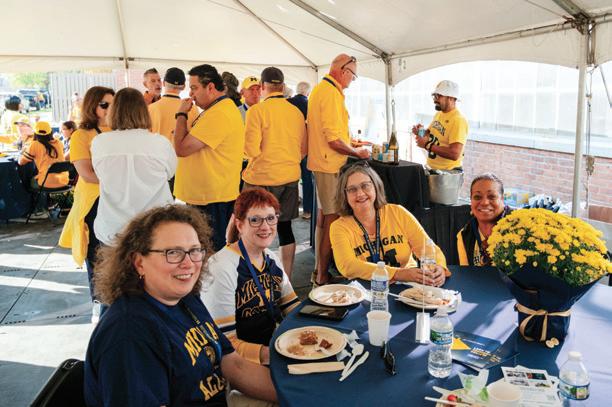


“Our goal at the end of the Cities Intensive is for students to have a kind of X-ray vision — to see the city around them with more depth.”
— Bryan Boyer, faculty director of the of Bachelor of Science in Urban Technology
University of Michigan
Taubman College of Architecture and Urban Planning
2000 Bonisteel Blvd.
Ann Arbor, MI 48109-2069 USA taubmancollege.umich.edu
Jonathan Massey Dean
Cynthia Enzer Radecki, A.B./B.S. Arch ’87, M.Arch ’88 Assistant Dean, Advancement
Deniz McGee Director, Marketing and Communications
Eric Gallippo Editor
Liz Momblanco Senior Graphic Designer
Contributing Writers:
Izzy Kornblatt/Architectural Record; Joshua Nicholson, B.S. Urban Tech ’26
Image Credits:
Robert Adams (p. 37); Eric Bronson/Michigan Photography (p. 16/top); Rowan Freeman, B.S. ’27 (pp. 6, 51/Homecoming Tailgate); Lunar North (cover, p. 12); Devin O’Neill (inside front cover, pp. 15/top, 16/bottom, 19, 20/top, 26/bottom right, 32, 51/Milestone Reunion, 52); Łukasz Stanek (p. 25); Dori Sumter (pp. 8/ top, 15/bottom); © T+E+A+M (pp. 20-21 except as noted, Brooke Holm/top, 2, The Whitaker Group/bottom)
Portico is a semiannual publication for alumni and friends of Taubman College, produced by the Office of Advancement. This issue was printed by University Lithoprinters.
We welcome alumni news, letters, and comments at taubmancollegeportico@umich.edu. You also can submit class notes online at: taubmancollege.umich.edu/alumni/portico
Has your address or email address changed?
Submit your new contact information online at taubmancollege.umich.edu/alumni or call 734.764.4720.
Postage paid at Ann Arbor, Michigan.
POSTMASTER: Send address changes to Editor, Portico, University of Michigan Taubman College of Architecture and Urban Planning, 2000 Bonisteel Blvd., Ann Arbor, MI 48109-2069 USA
© 2025 Regents of the University of Michigan
The Regents of the University of Michigan
Jordan B. Acker, Huntington Woods
Michael J. Behm, Grand Blanc
Mark J. Bernstein, Ann Arbor
Paul W. Brown, Ann Arbor
Sarah Hubbard, Okemos
Denise Ilitch, Bingham Farms
Carl J. Meyers, Dearborn
Katherine E. White, Ann Arbor
Domenico Grasso (ex officio)
Nondiscrimination Policy Statement
The University of Michigan, as an equal opportunity employer, complies with all applicable federal and state laws regarding nondiscrimination. The University of Michigan is committed to a policy of equal opportunity for all persons and does not discriminate on the basis of race, color, national origin, age, marital status, sex, sexual orientation, gender identity, gender expression, disability, religion, height, weight, or veteran status in employment, educational programs and activities, and admissions. Inquiries or complaints may be addressed to the Equity, Civil Rights and Title IX Office located at 2030 Administrative Services Building, Ann Arbor, Michigan 48109-1432, 734-763-0235, TTY 734-6471388, ecrtoffice@umich.edu. For other University of Michigan information call 734-764-1817.
University of Michigan Taubman College of Architecture and Urban Planning
2000 Bonisteel Boulevard, Ann Arbor, MI 48109-2069
Address Service Requested
CAREER & PROFESSIONAL DEVELOPMENT
Wherever Wolverines go, progress follows. Our vision is to be the defining public institution, redefining the power of higher education in service to humanity.”
Together we will raise $25 million to support students, faculty and experiential learning. Join us to Look to Taubman College and empower the planners and designers building tomorrow.
Learn more, and give now.
Taubman College Career Network is your resource to:
CONNECT with Taubman College and U-M alumni
SEARCH and POST jobs/internships
SCHEDULE career strategy appointments
FIND resources for your job search and career development
Join today: umich.peoplegrove.com/hub/Taubman/home
Have questions? taubmancollegecareer@umich.edu